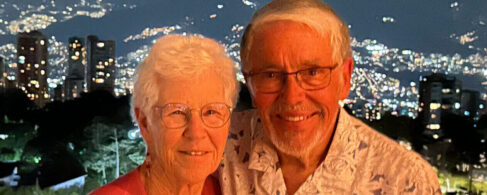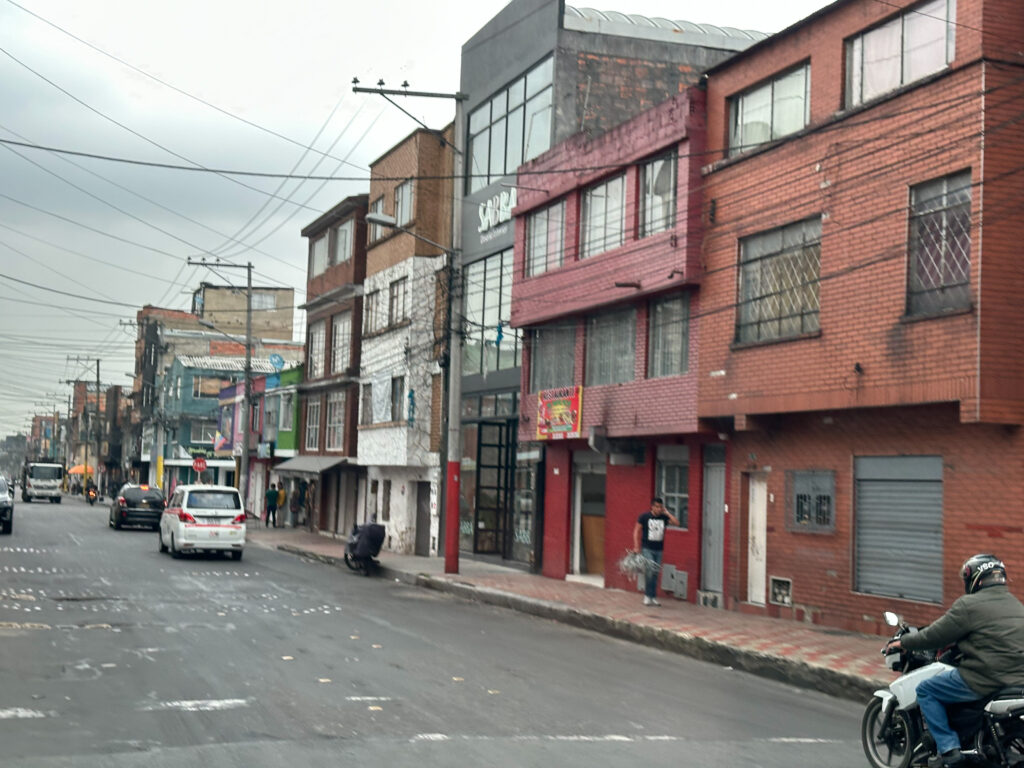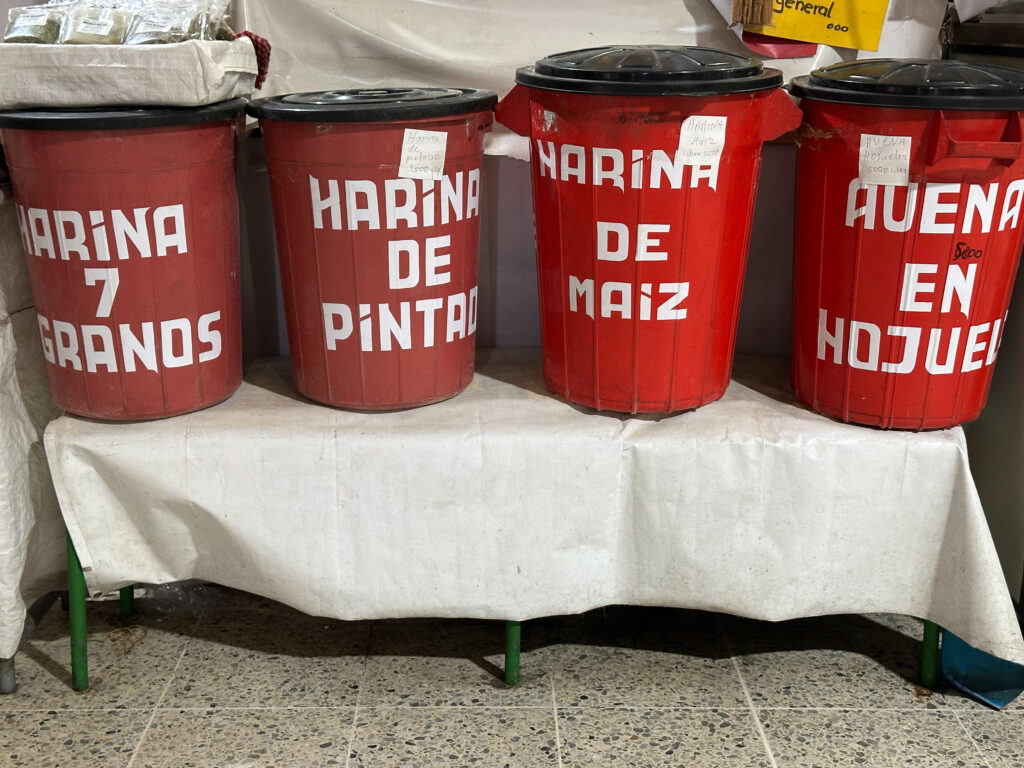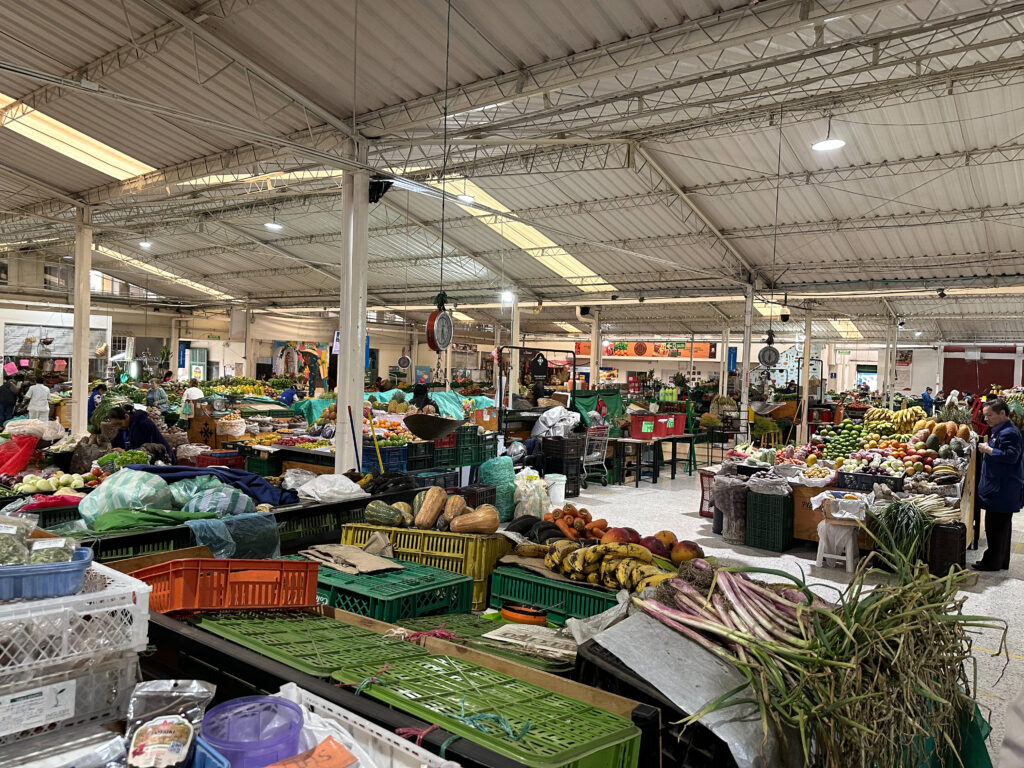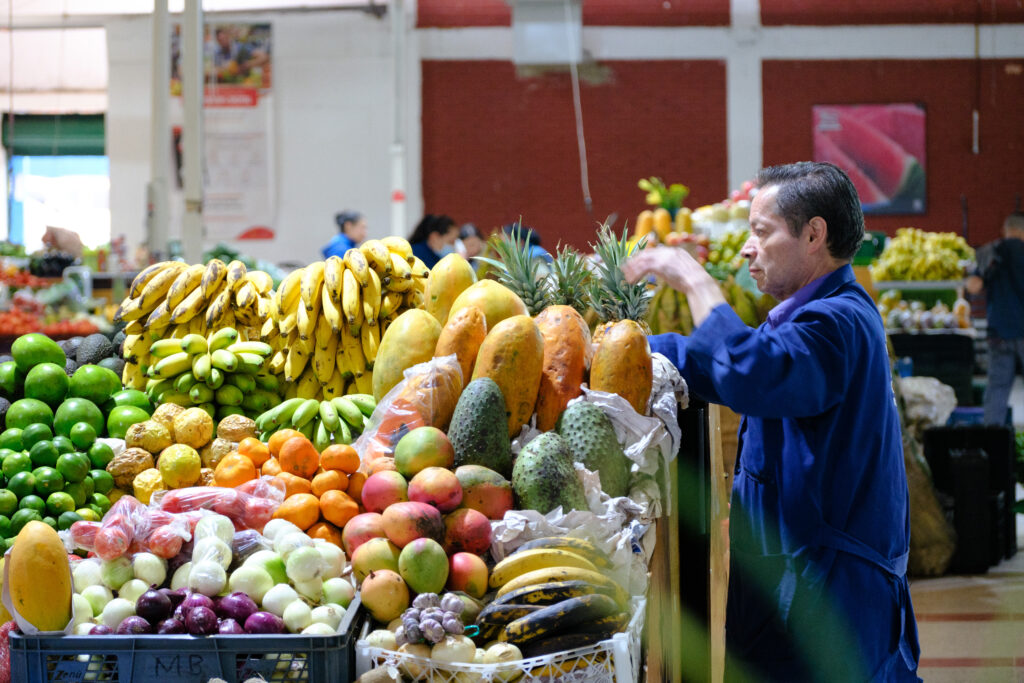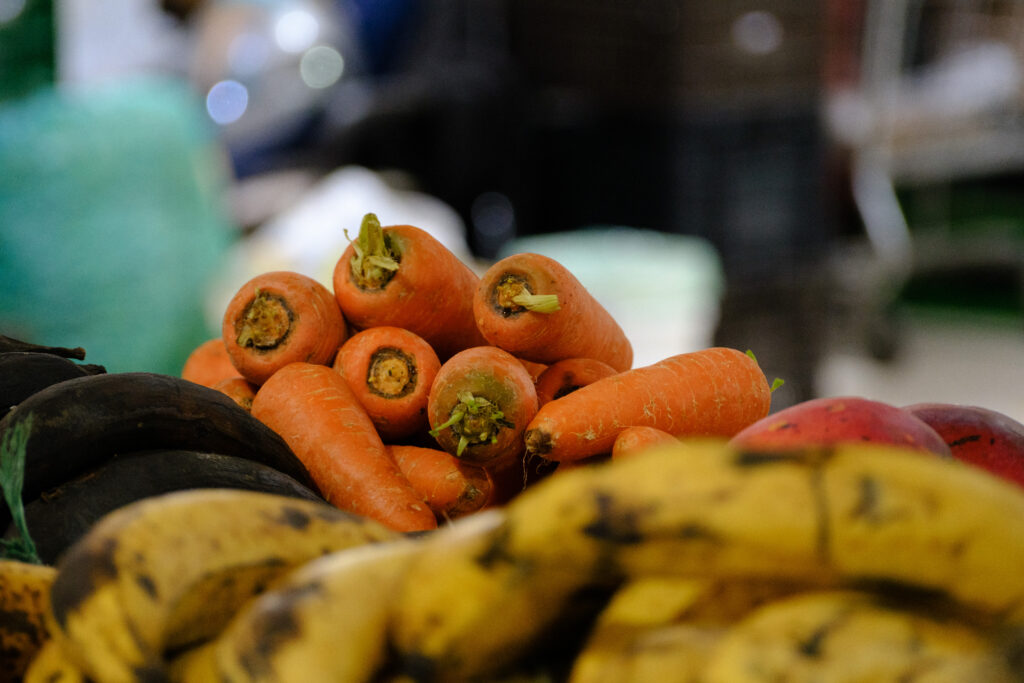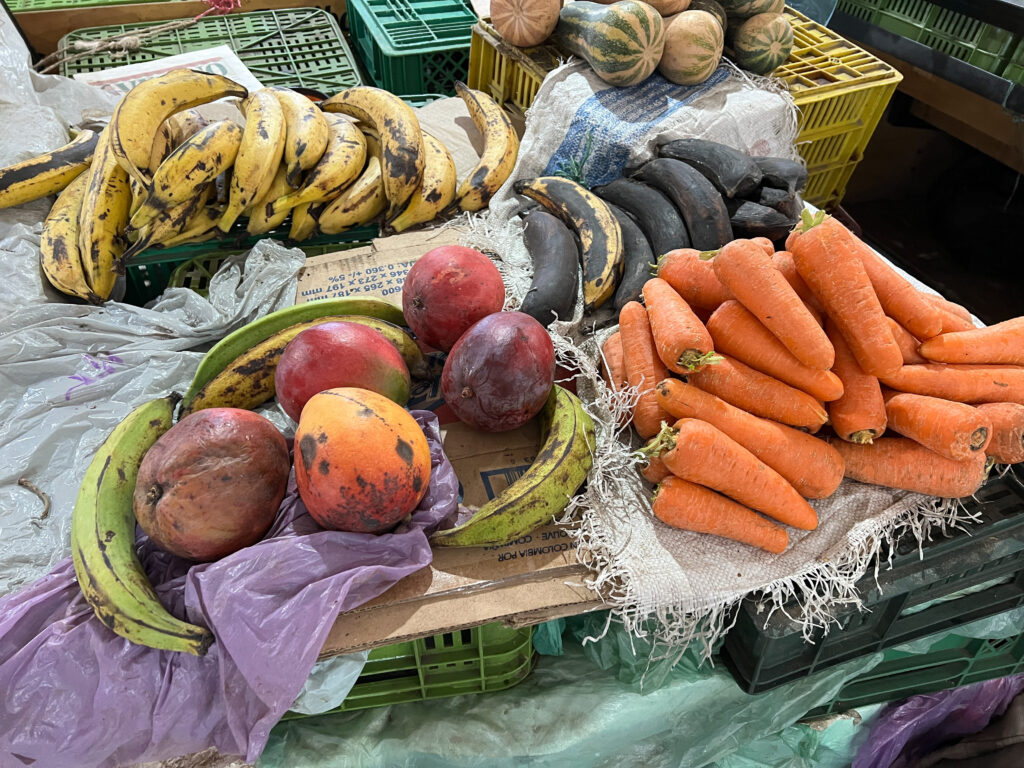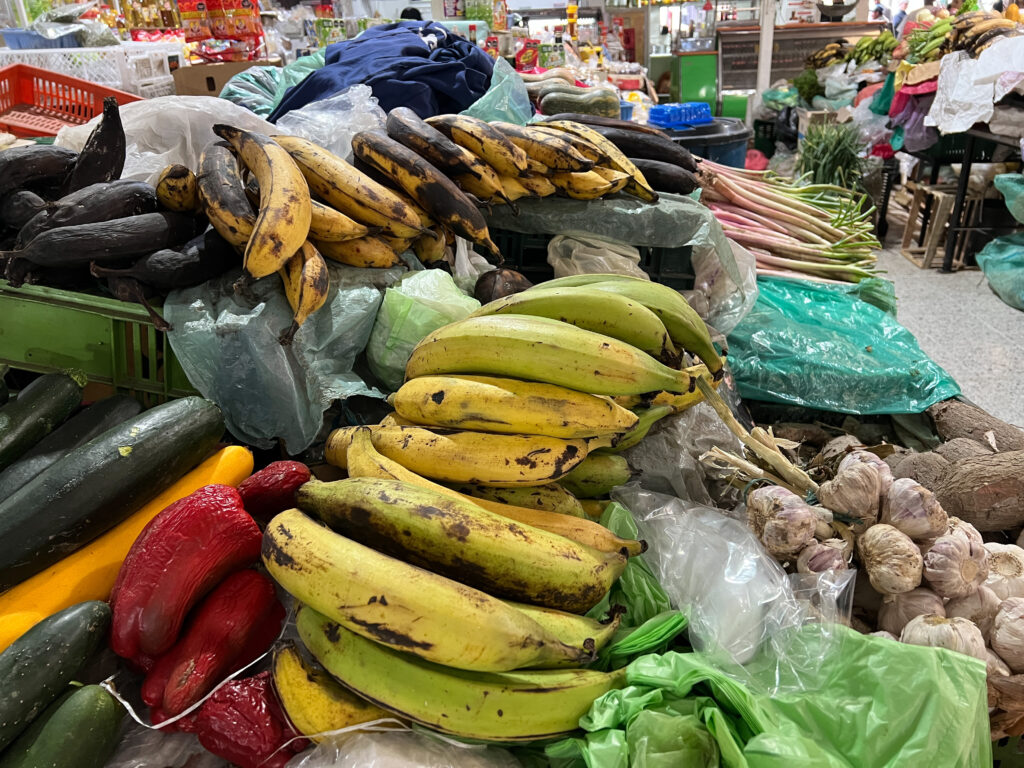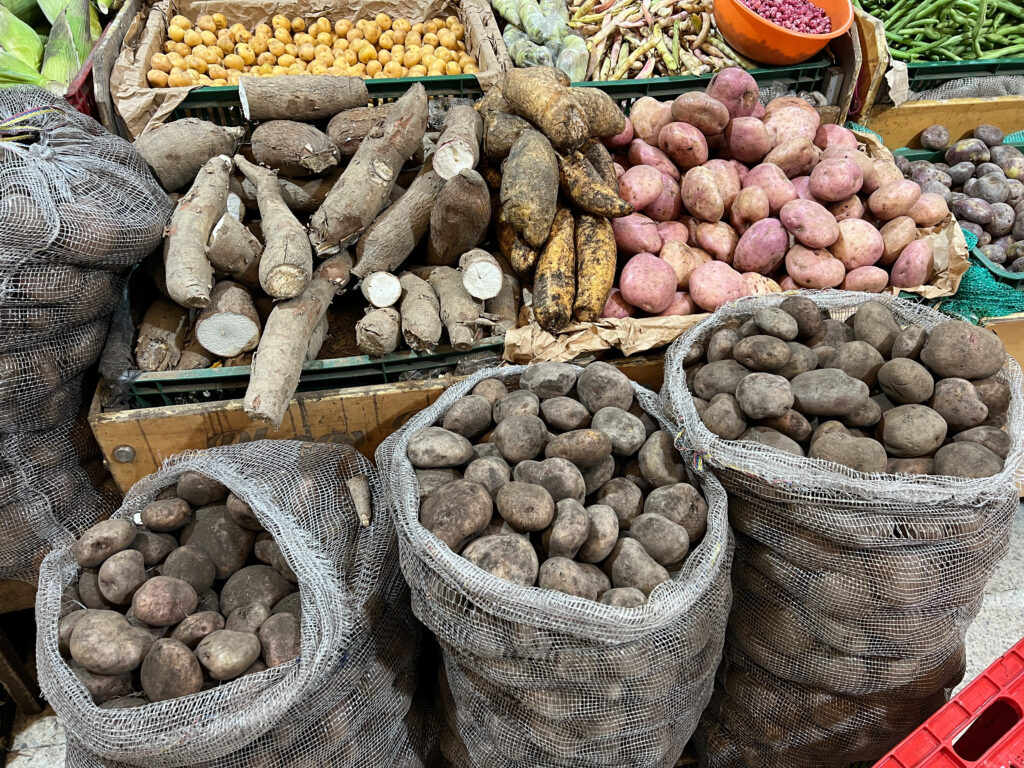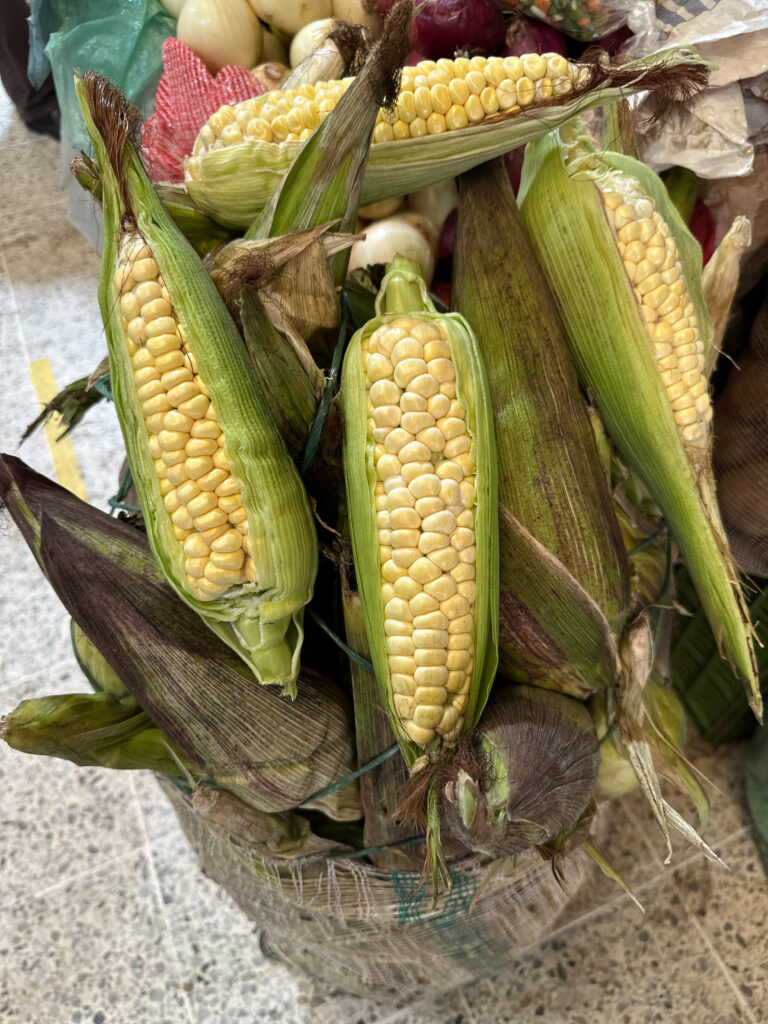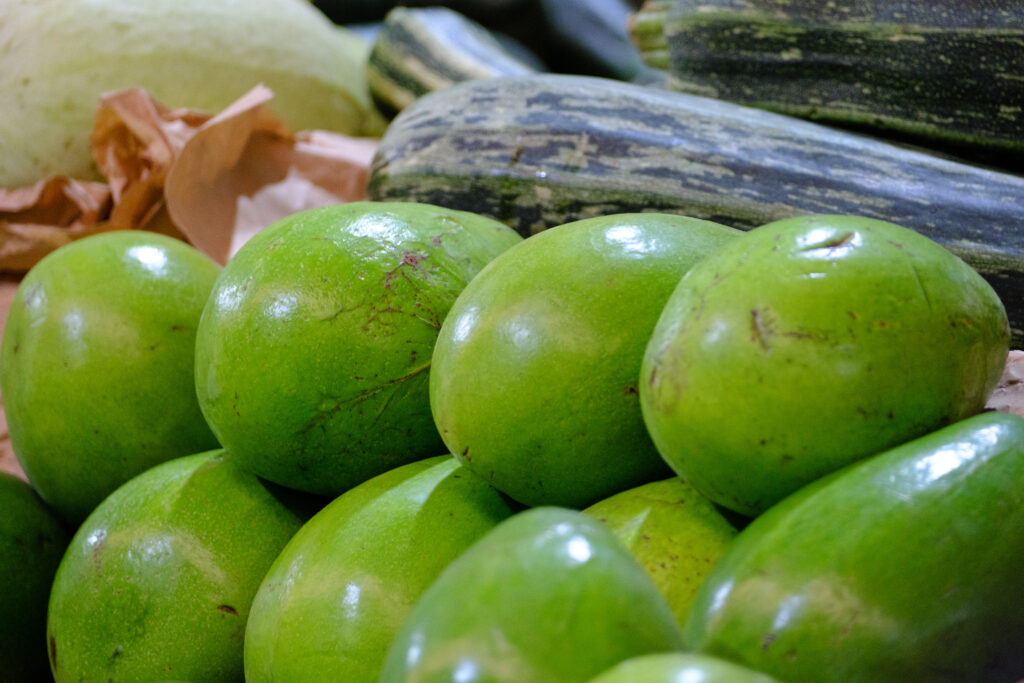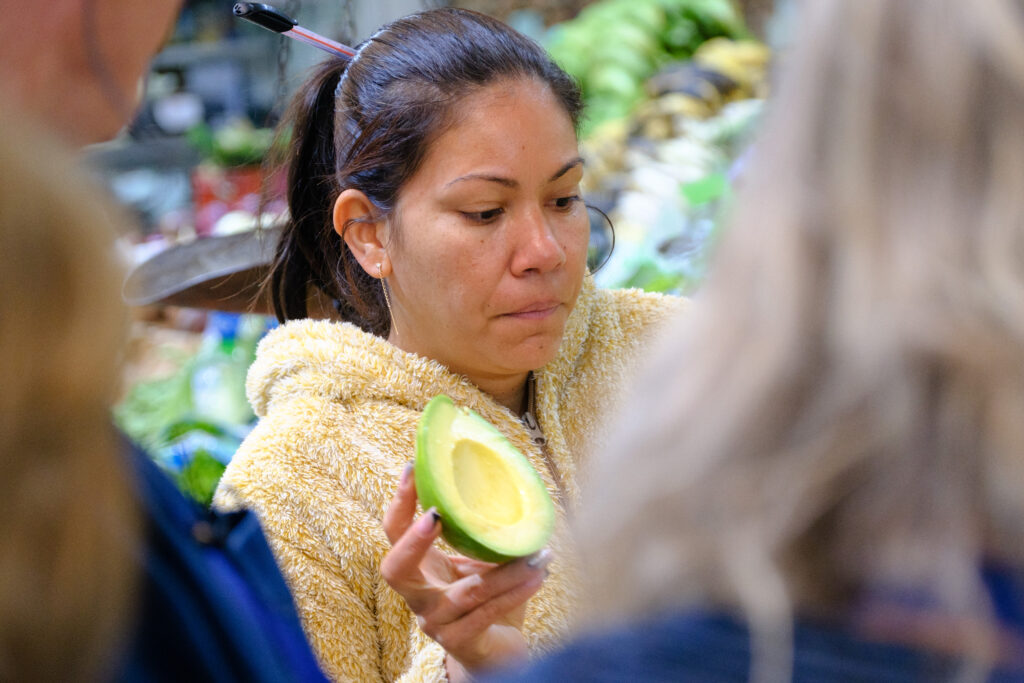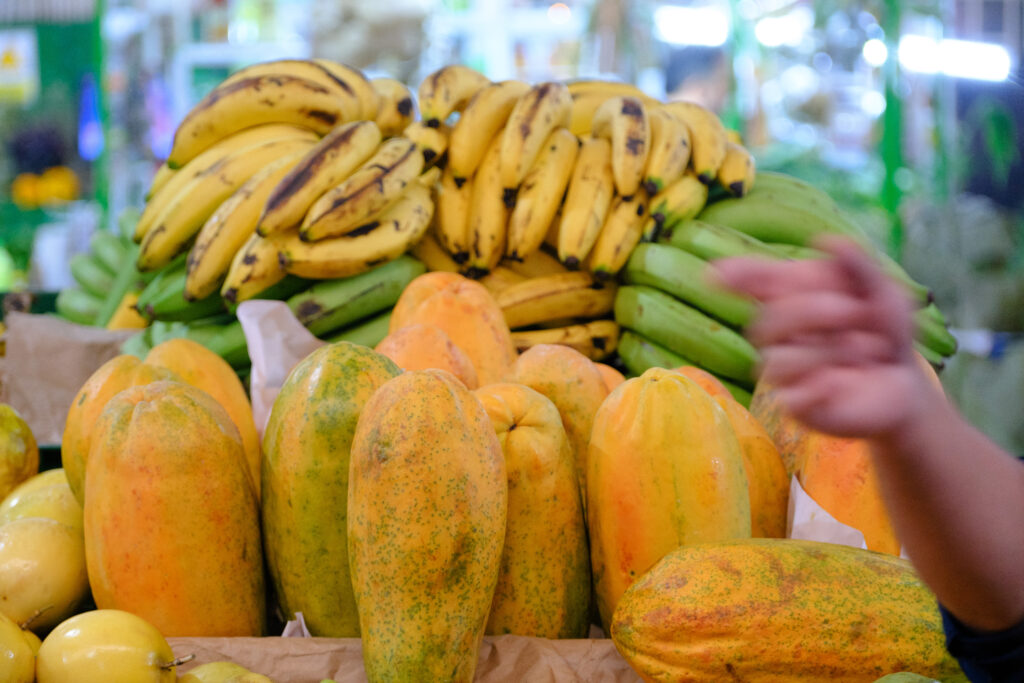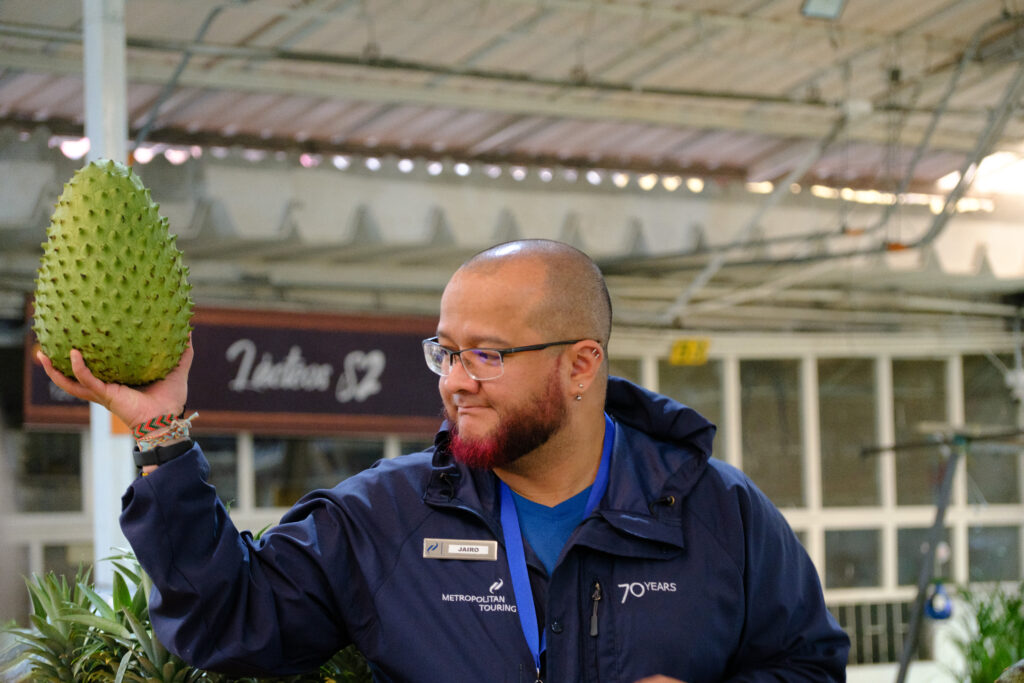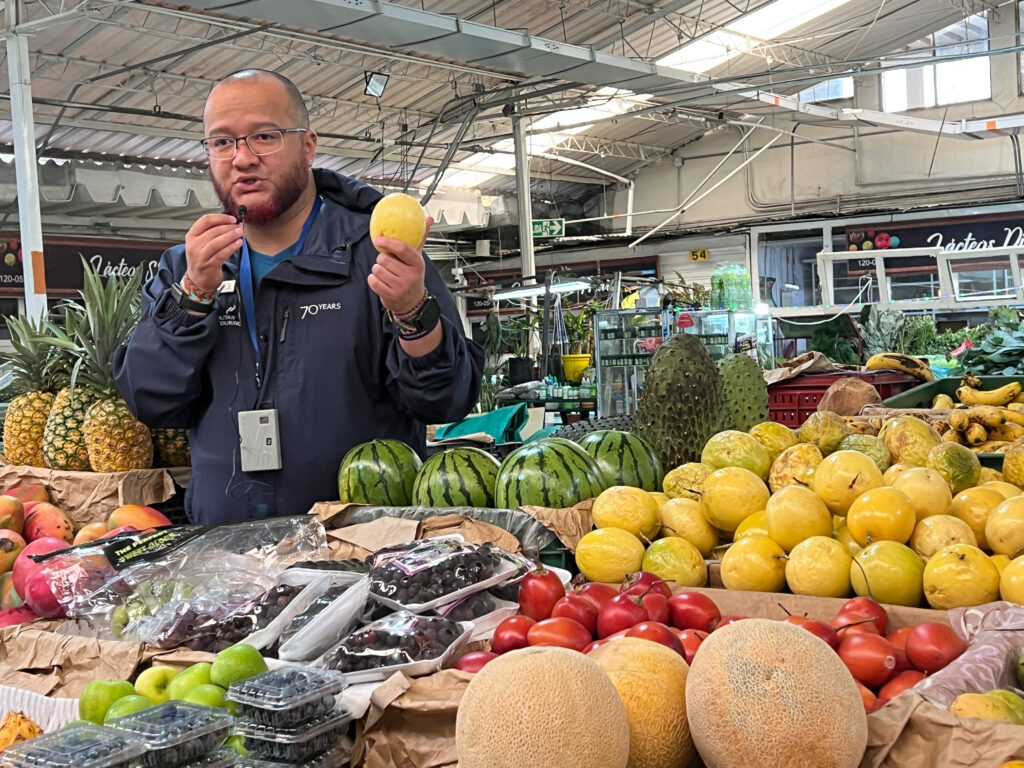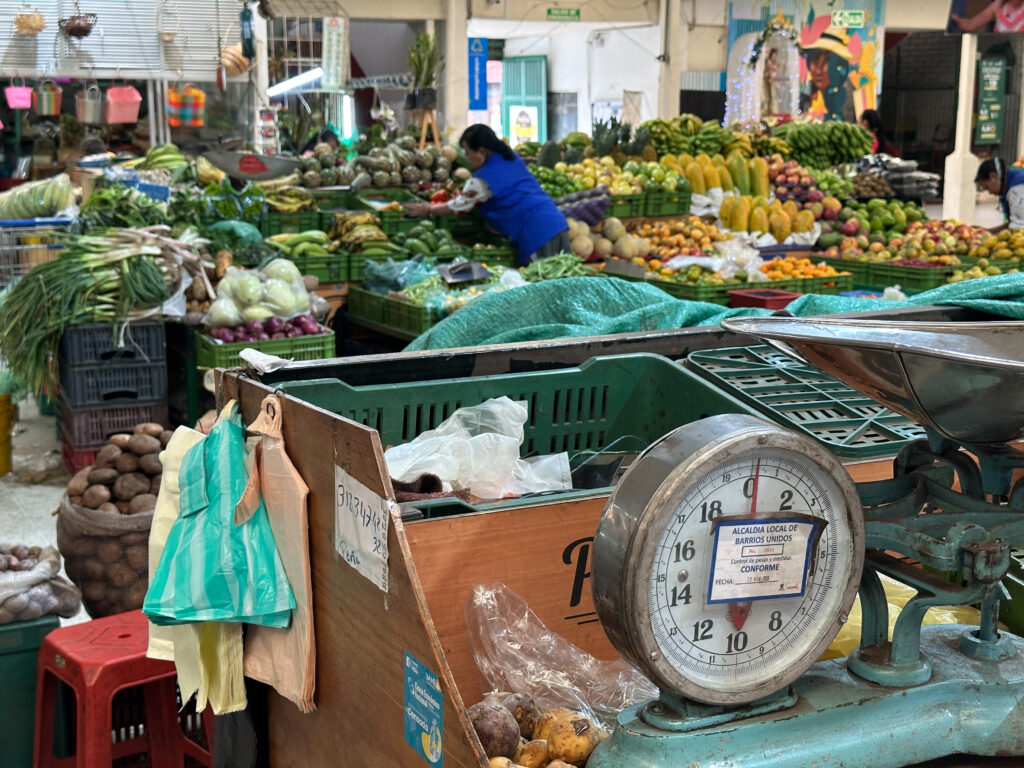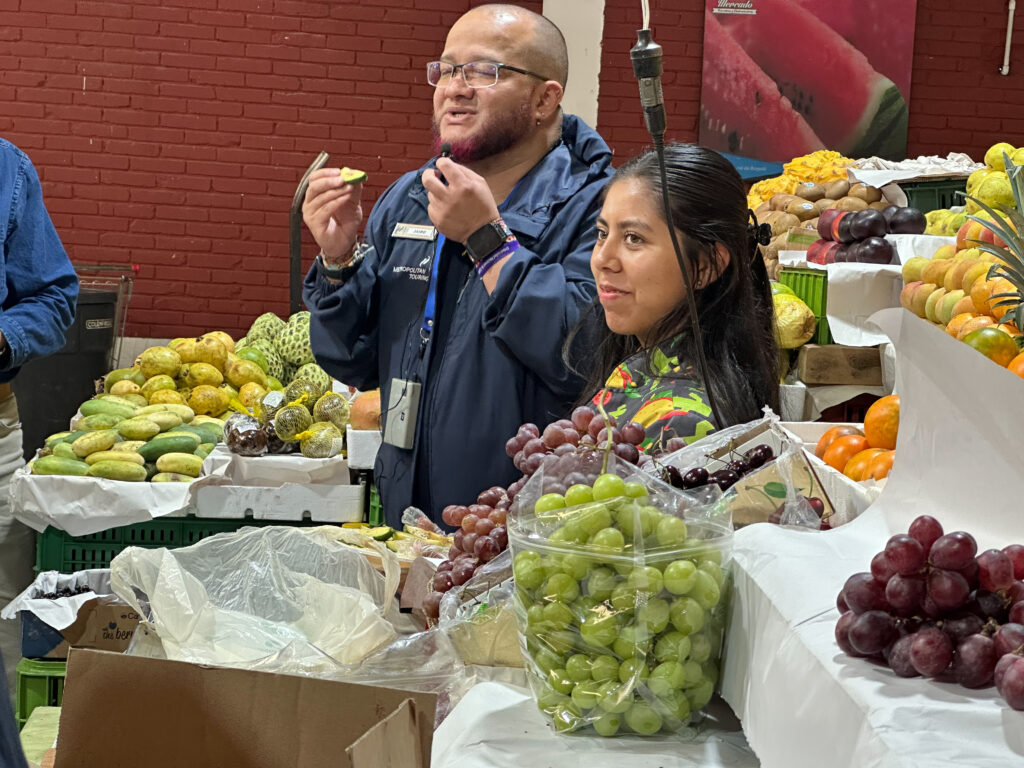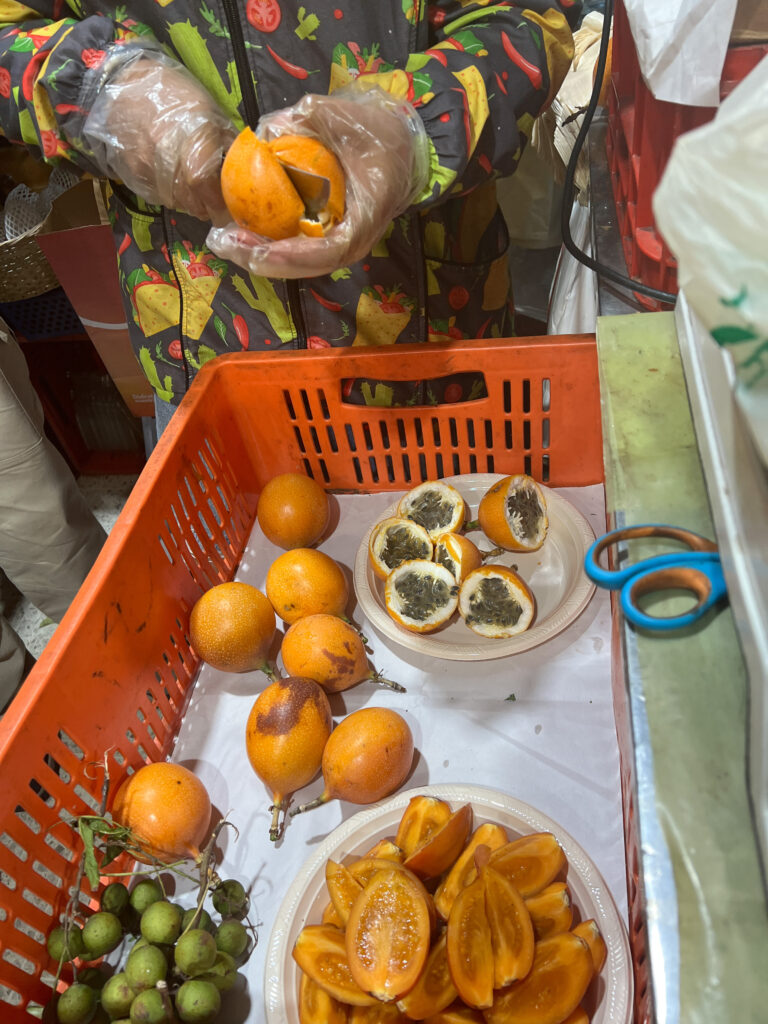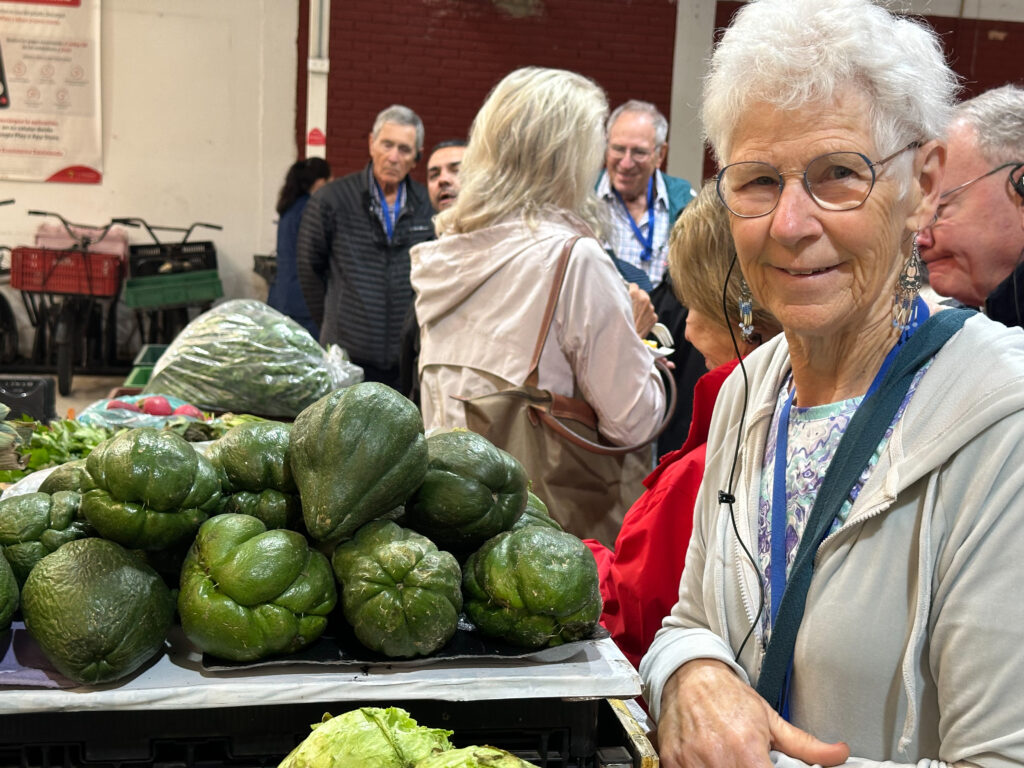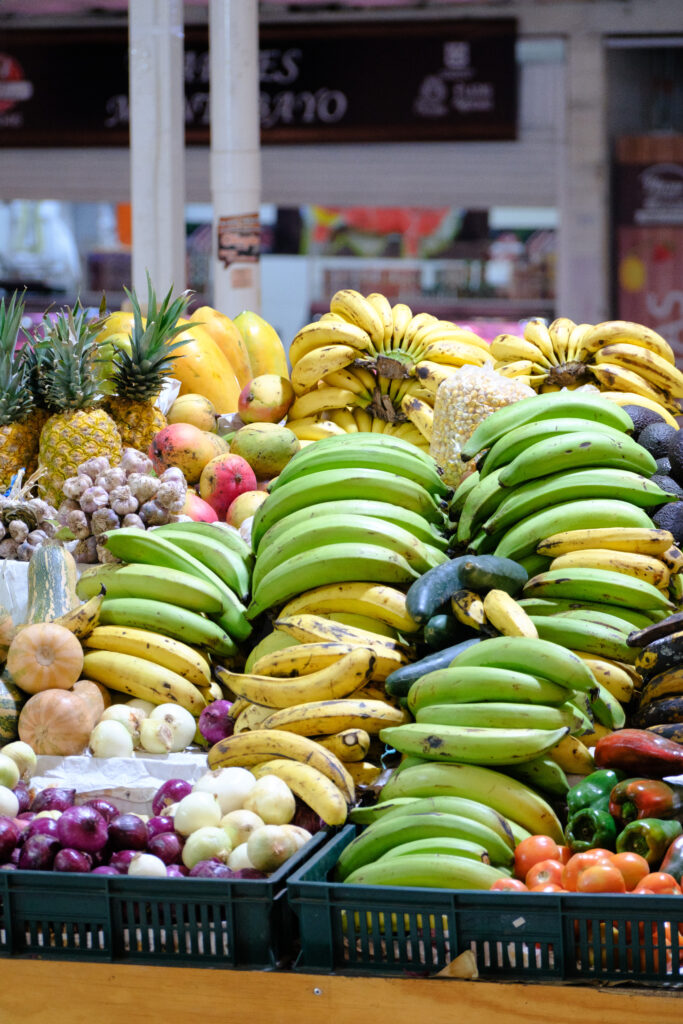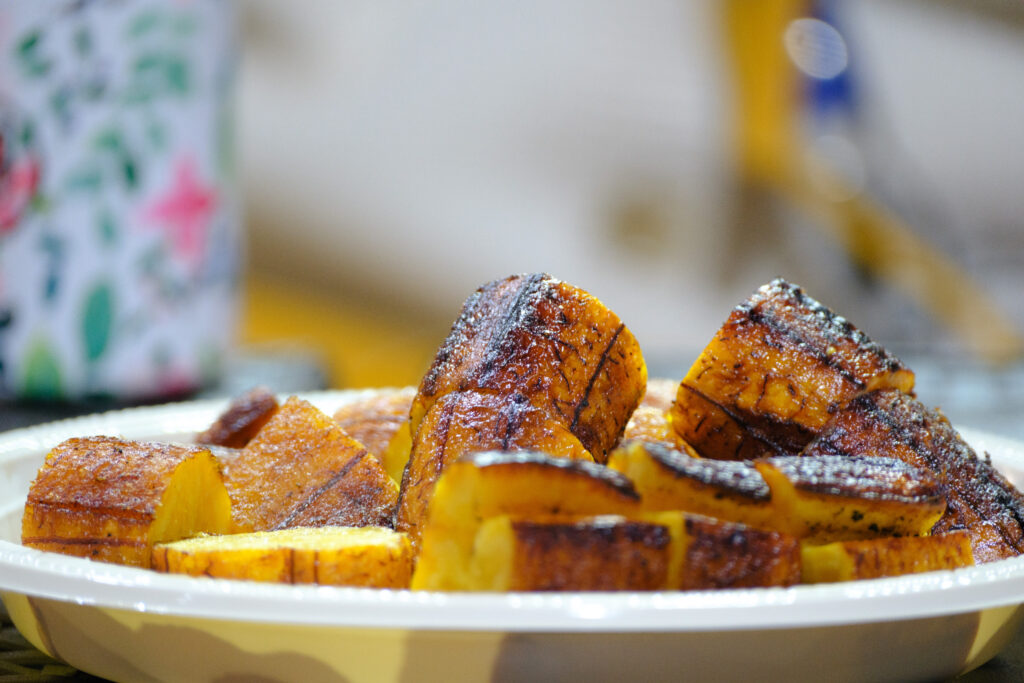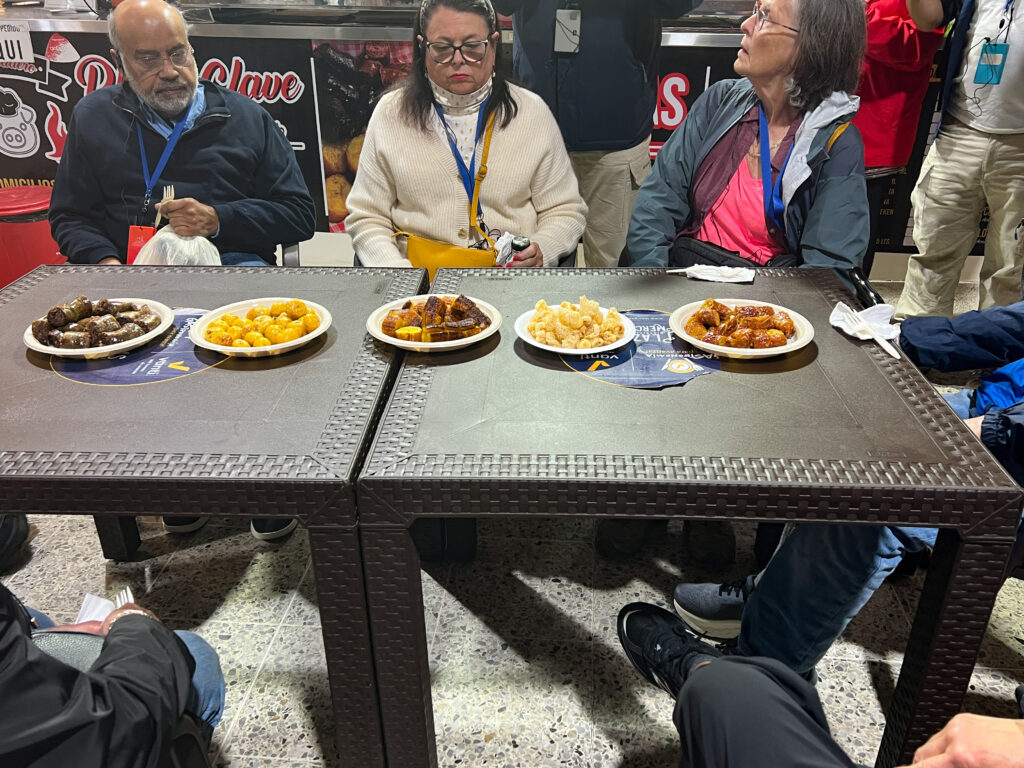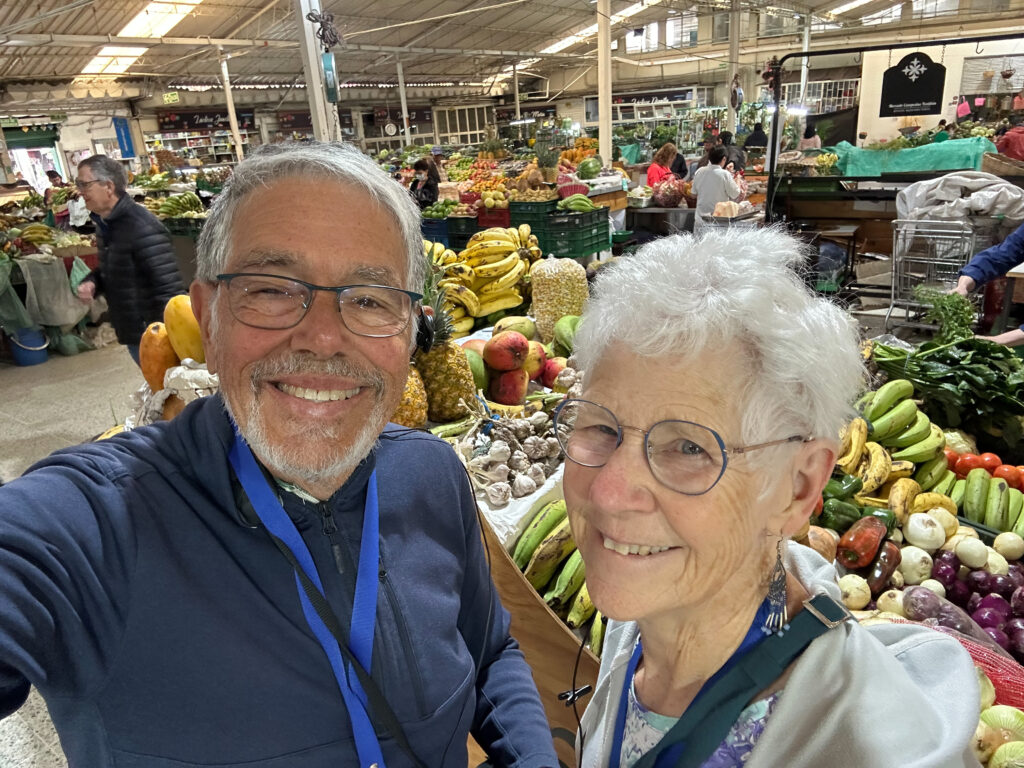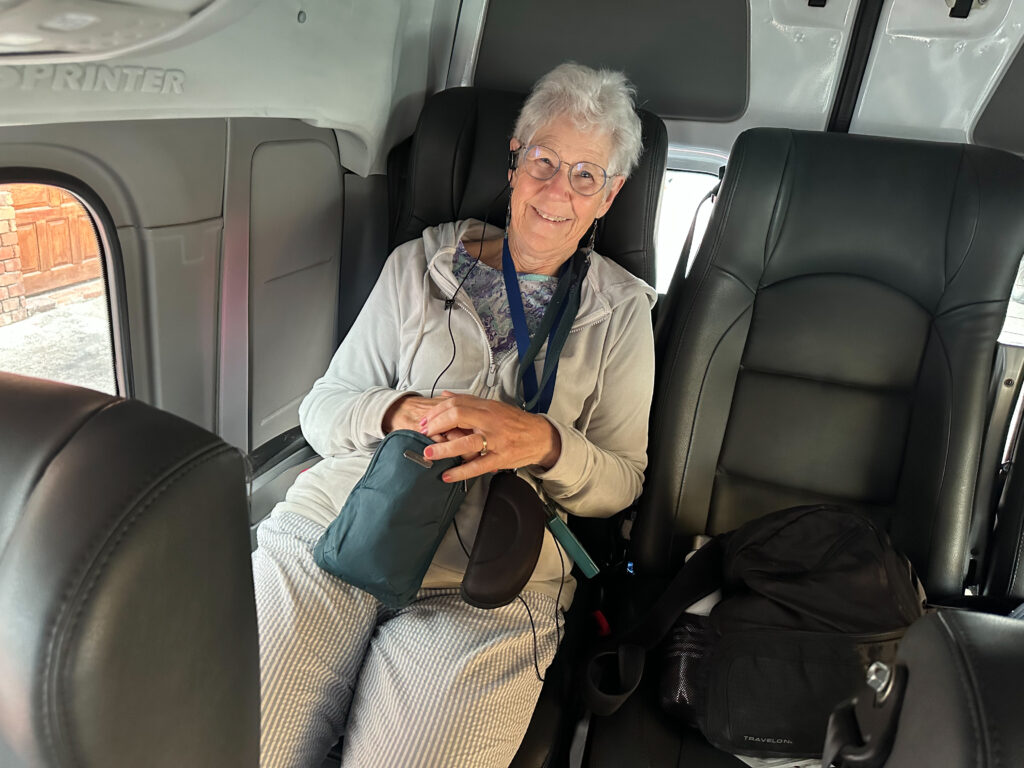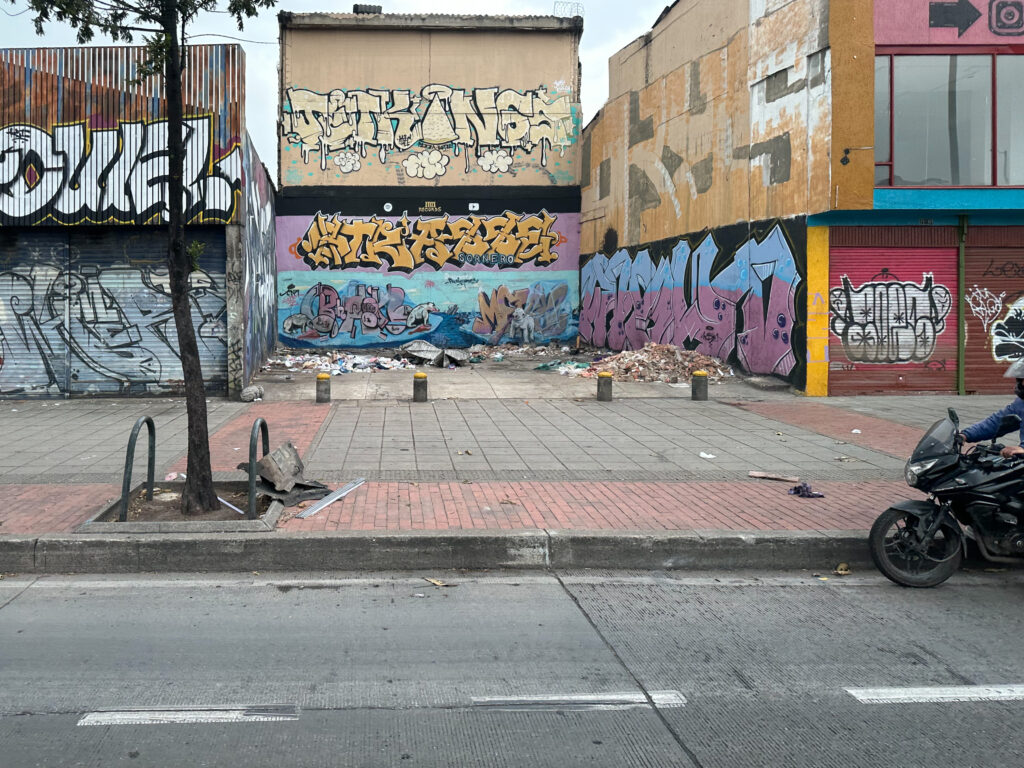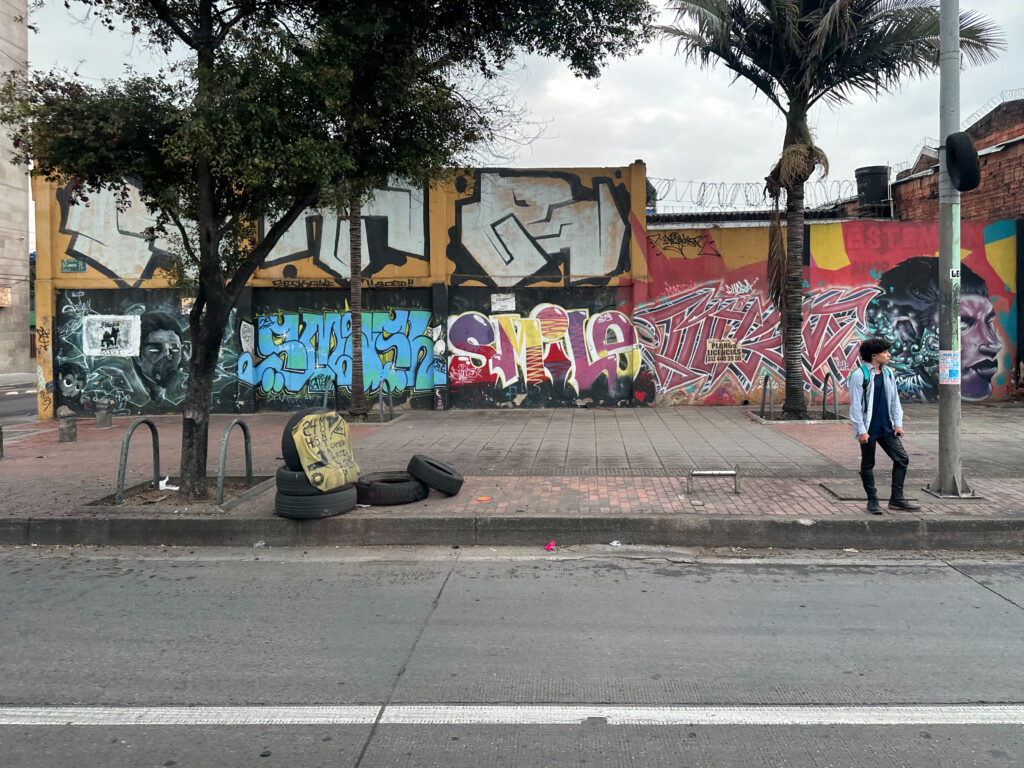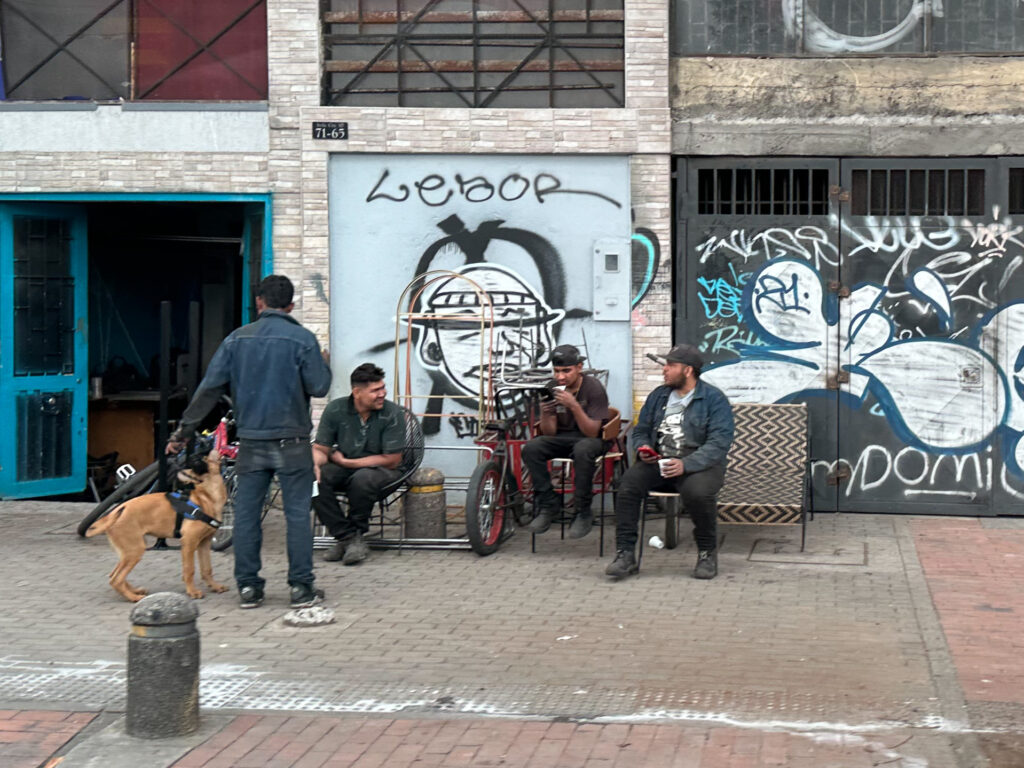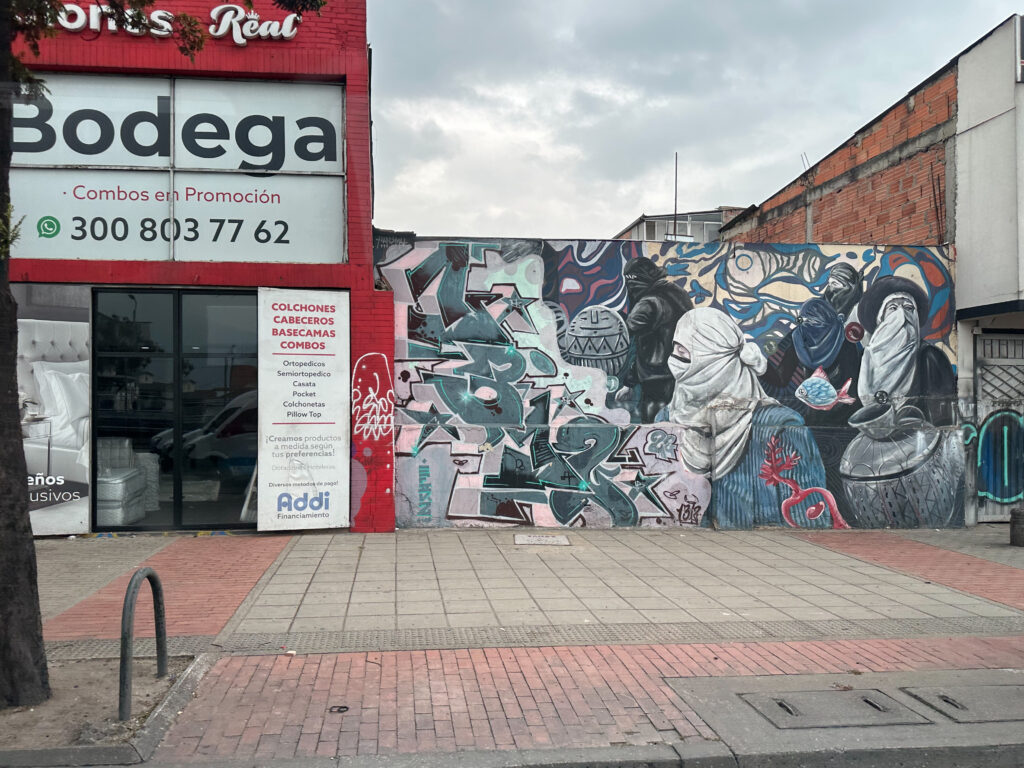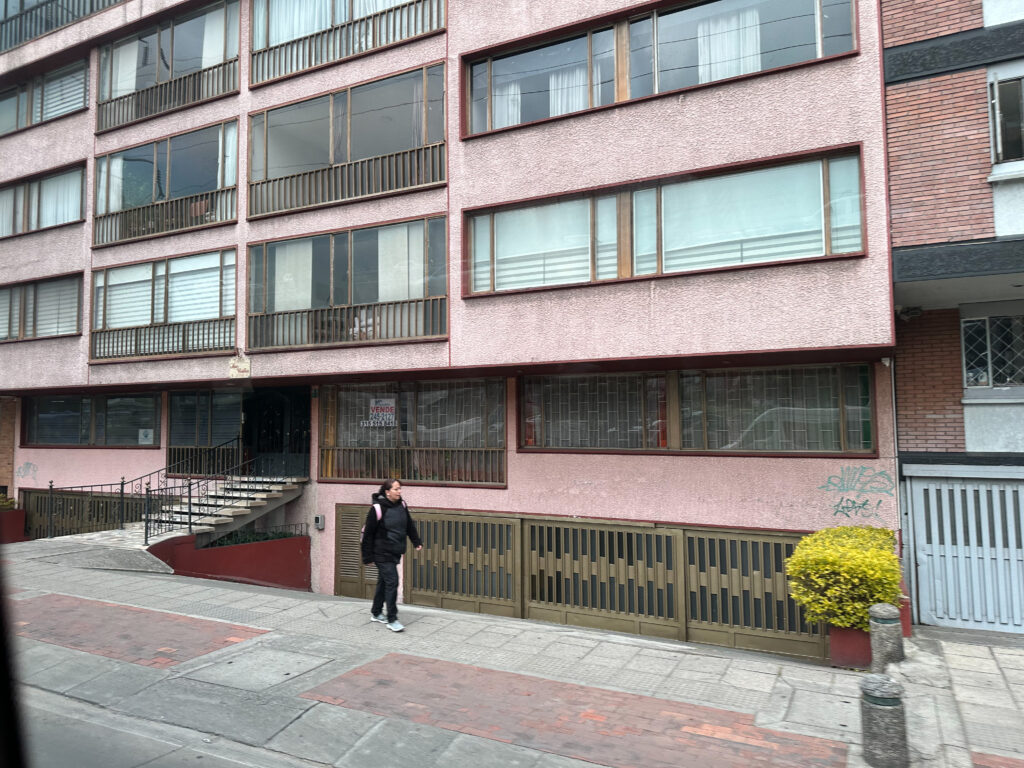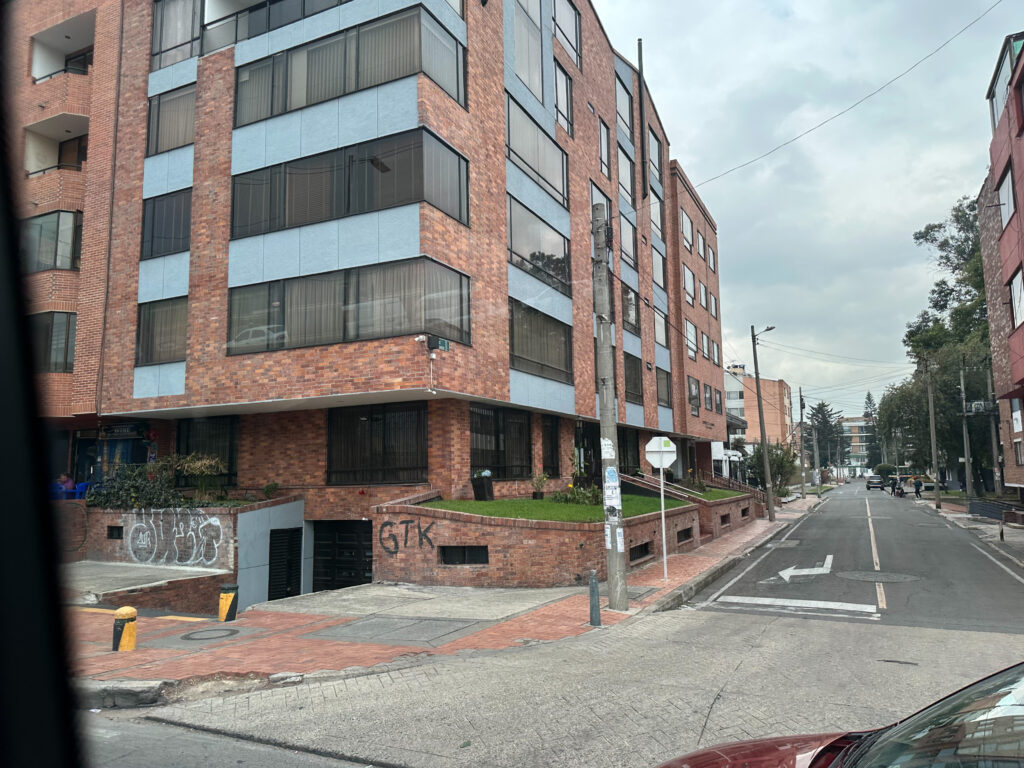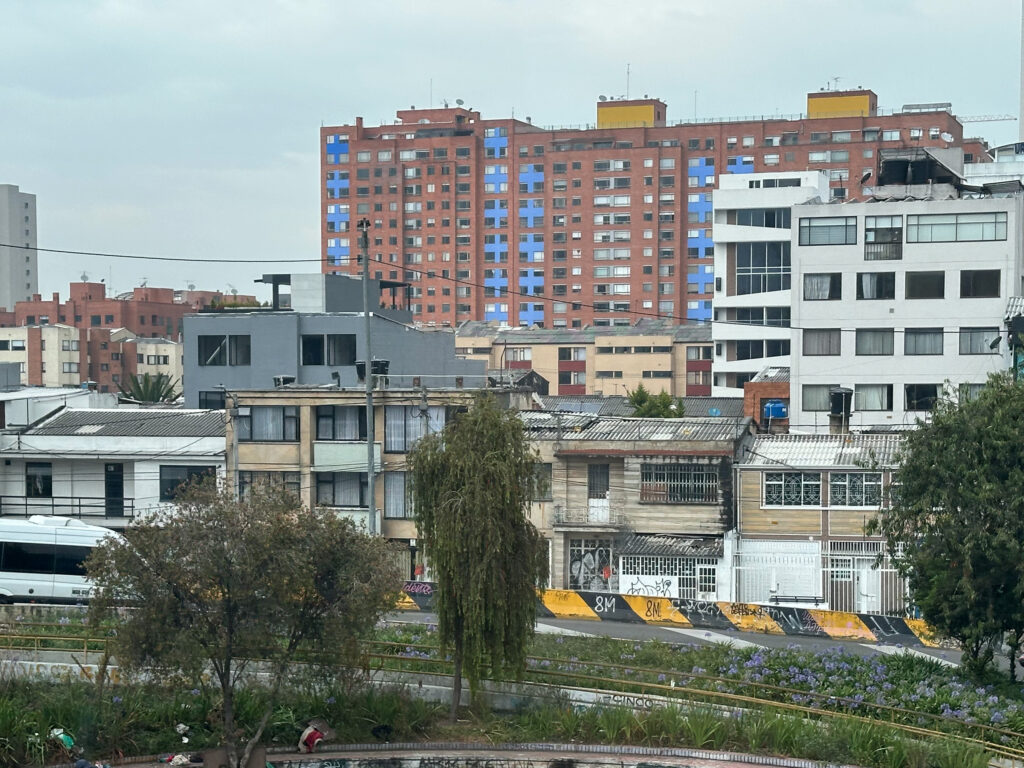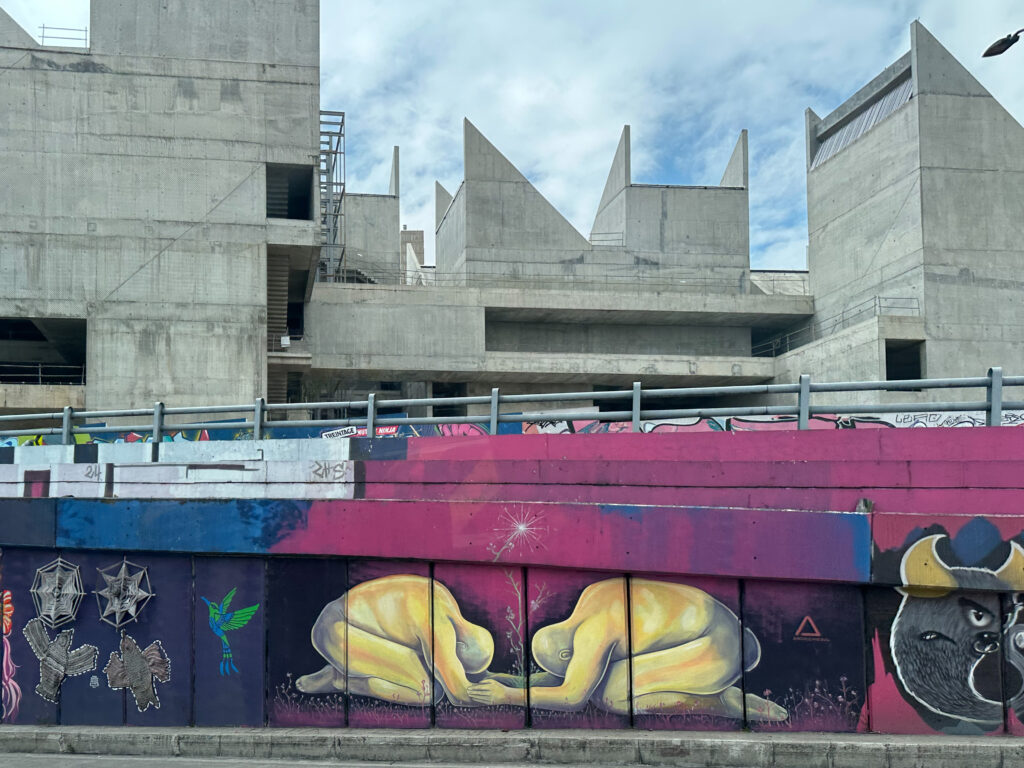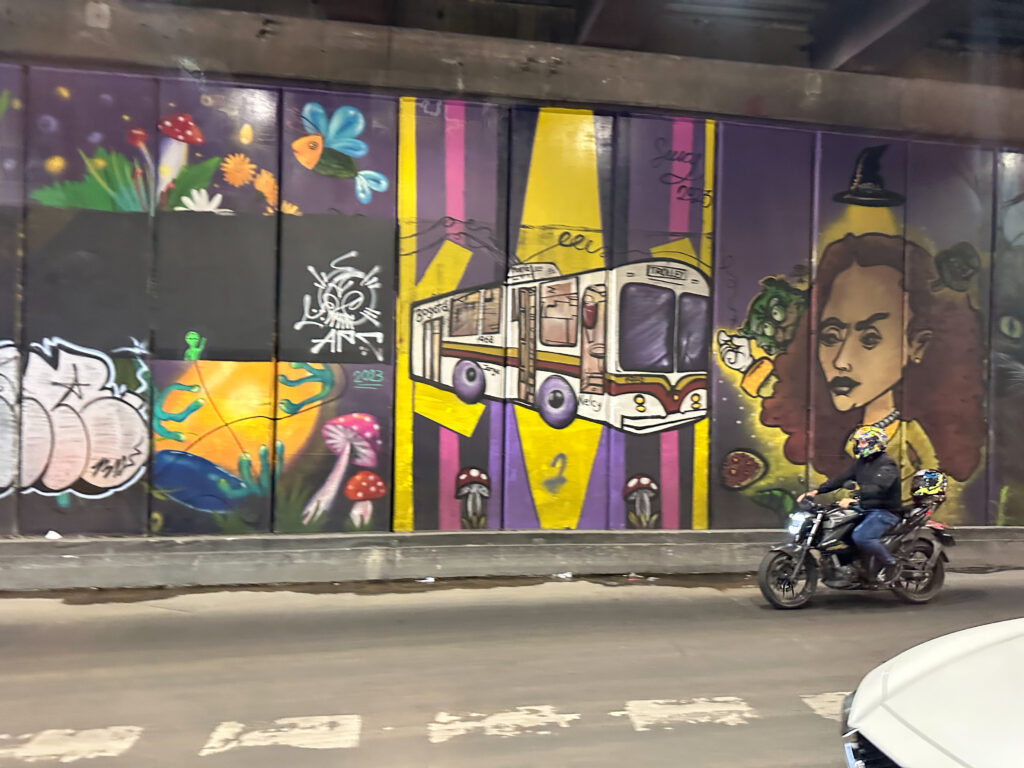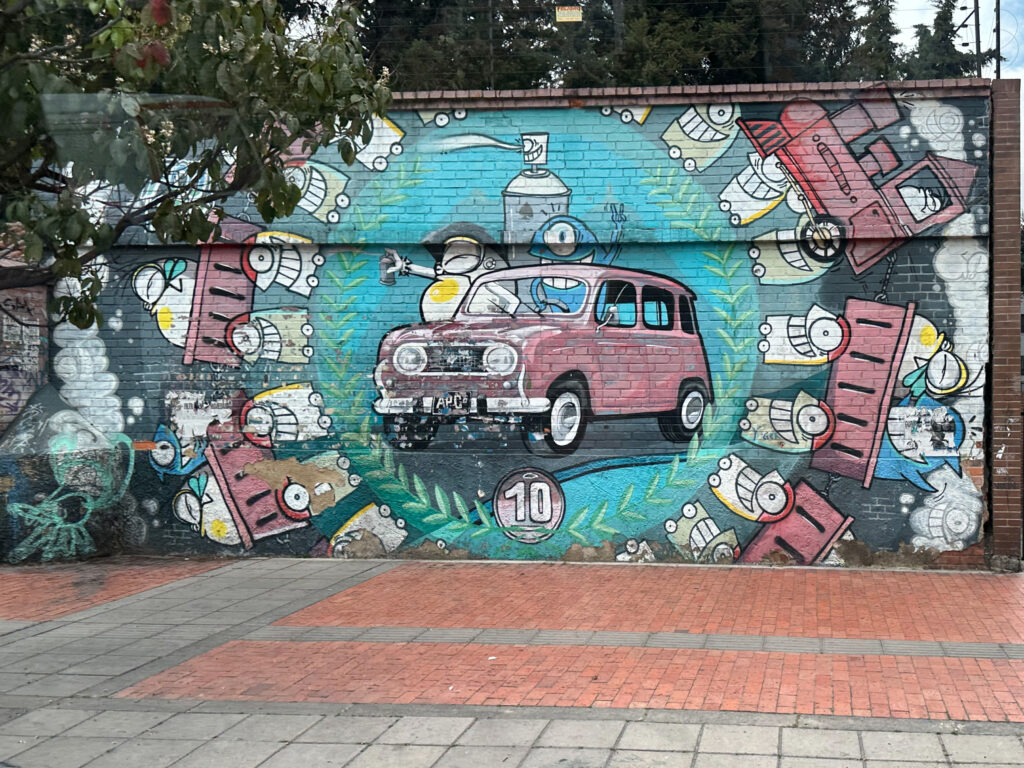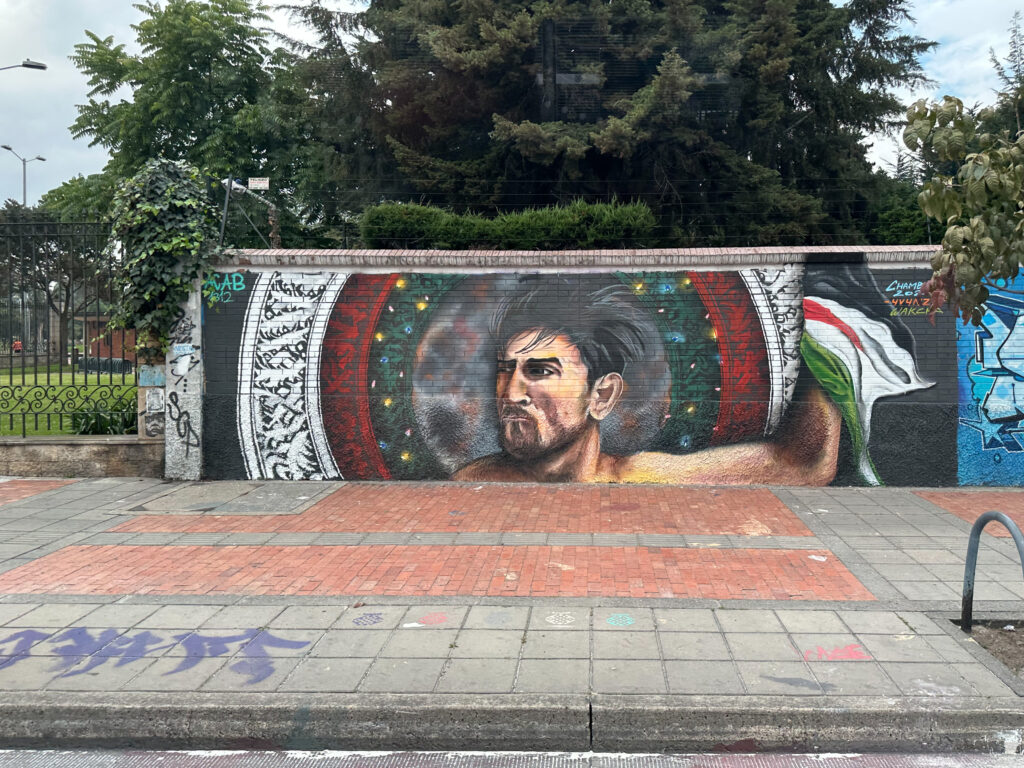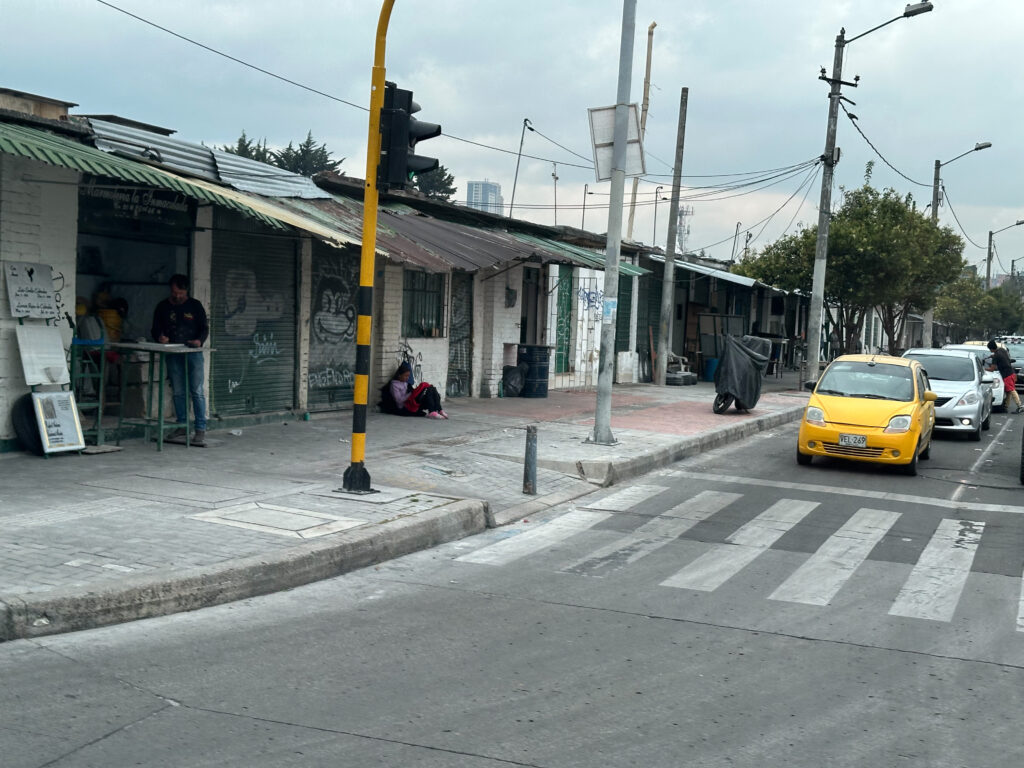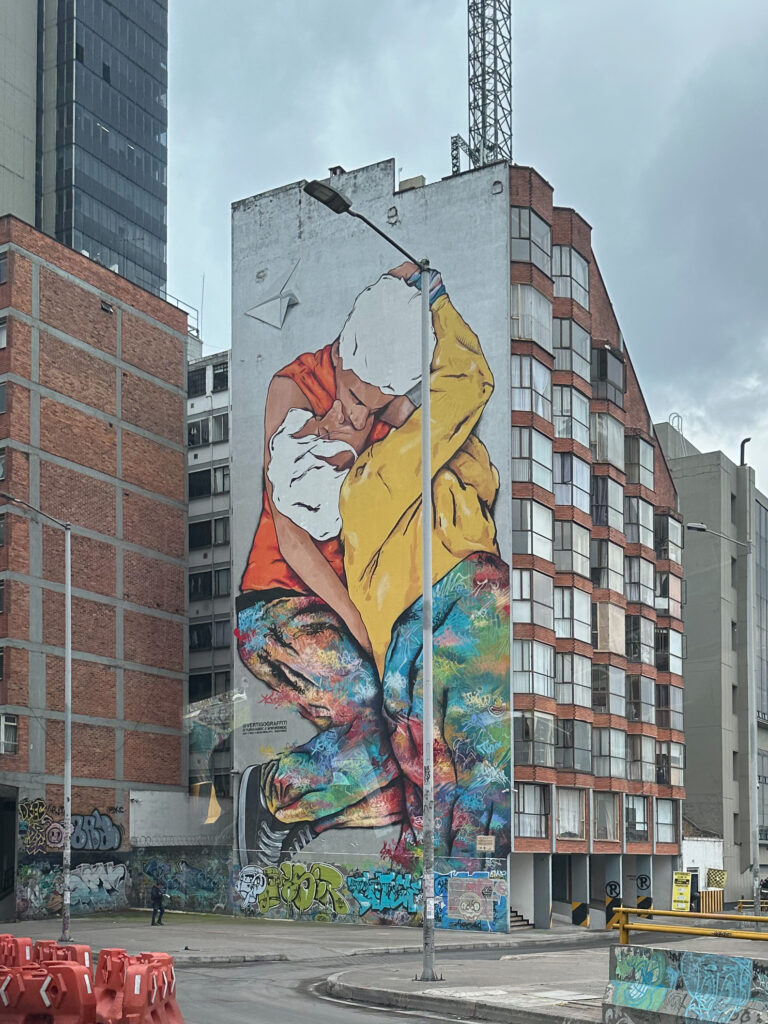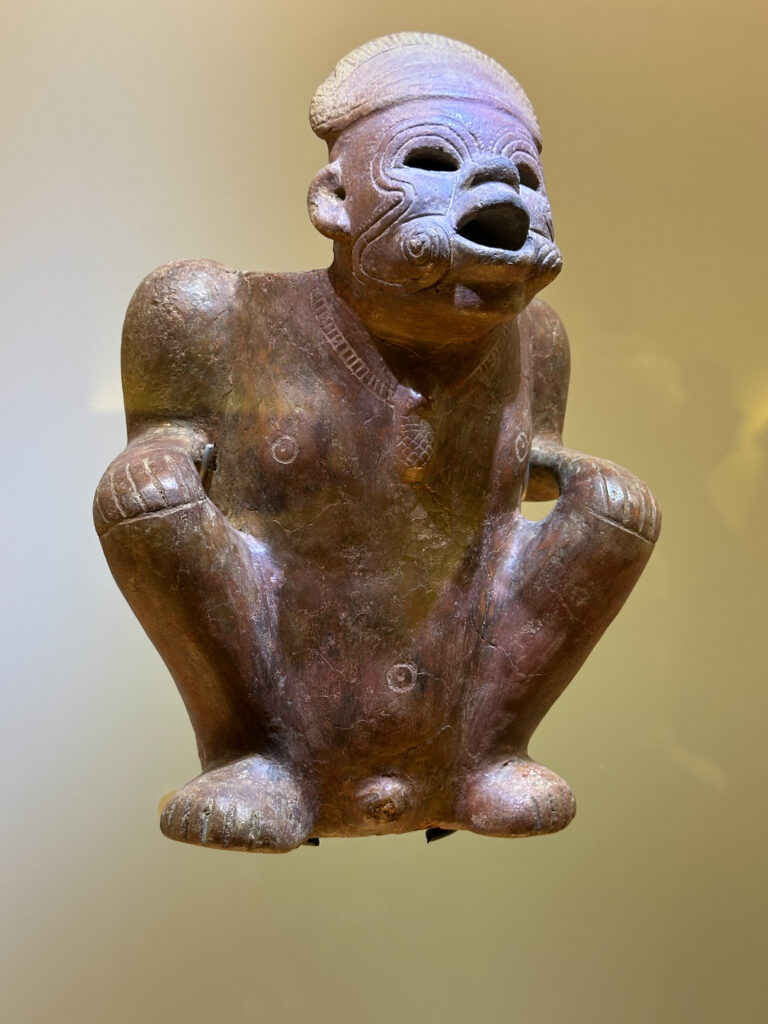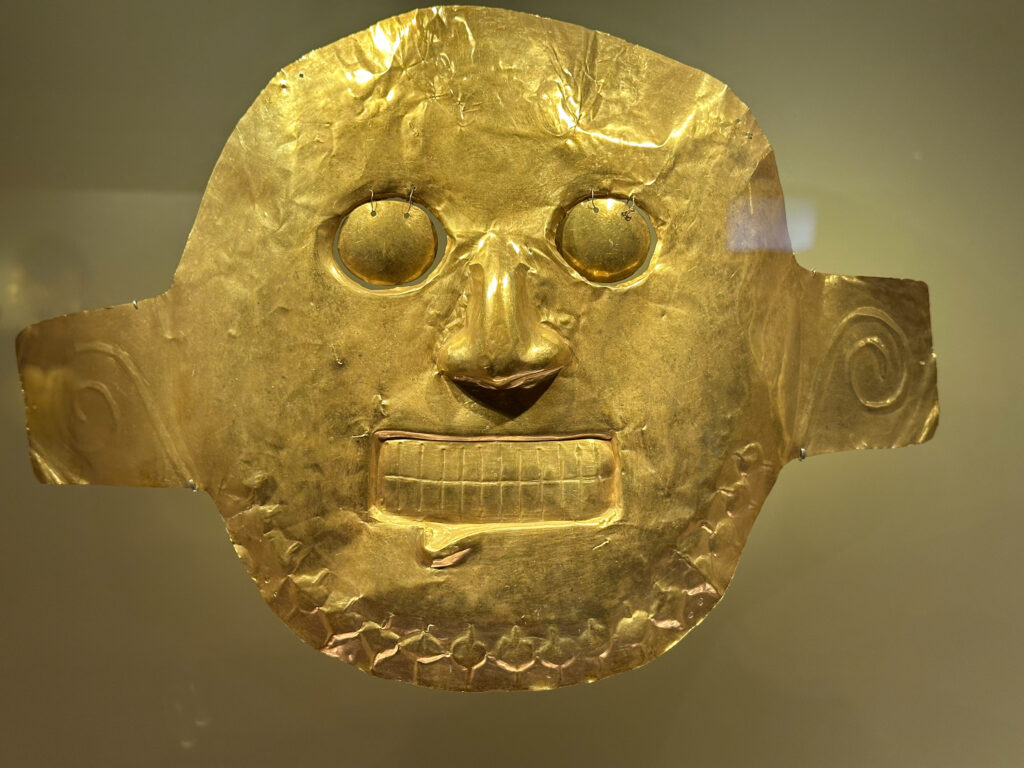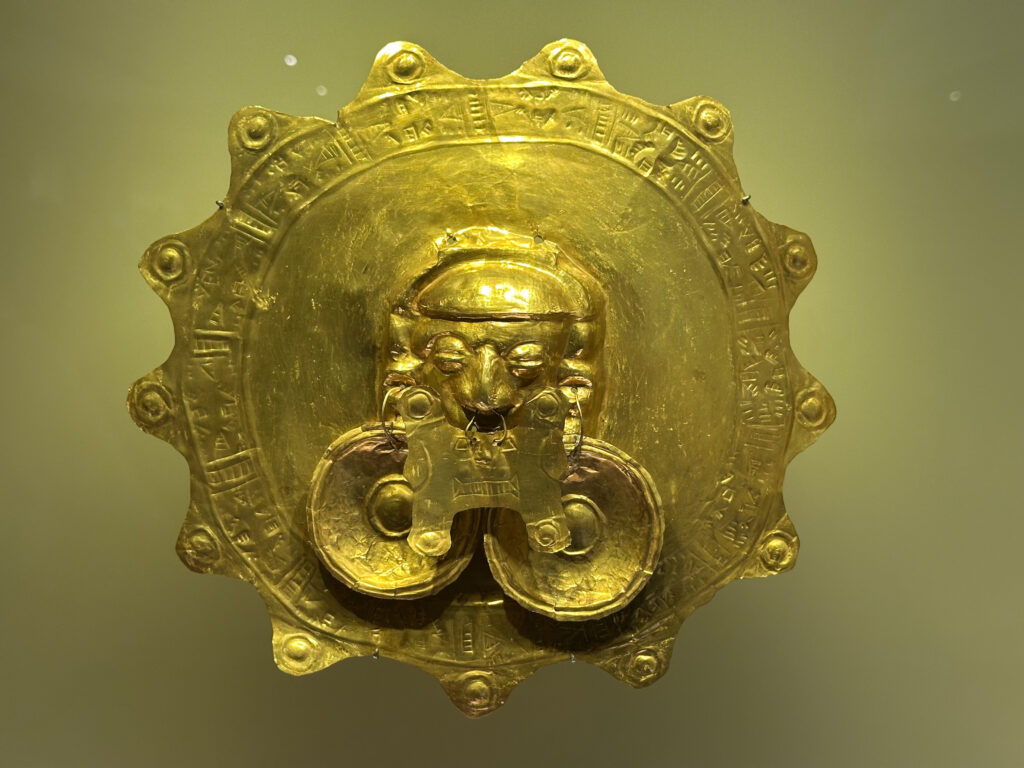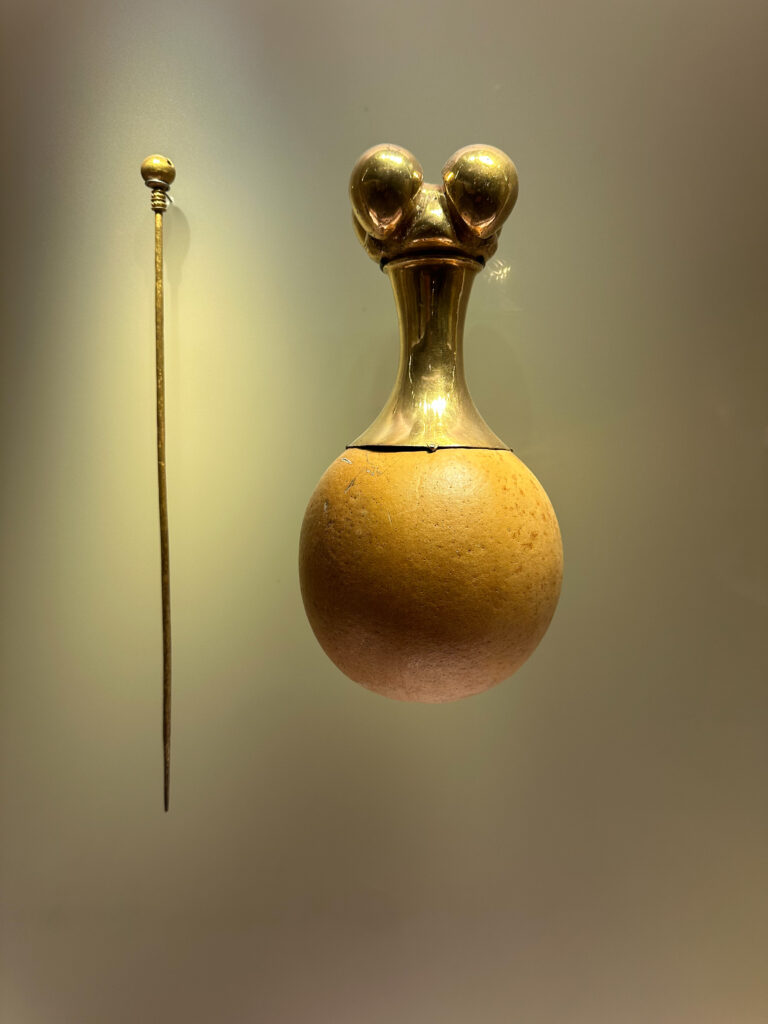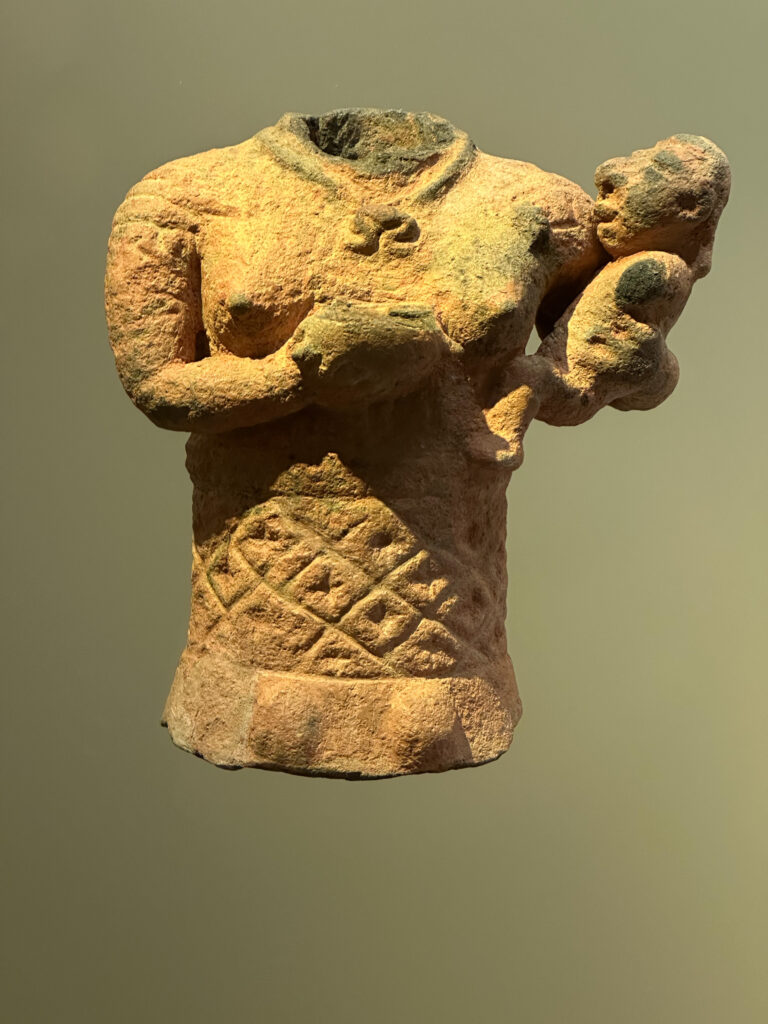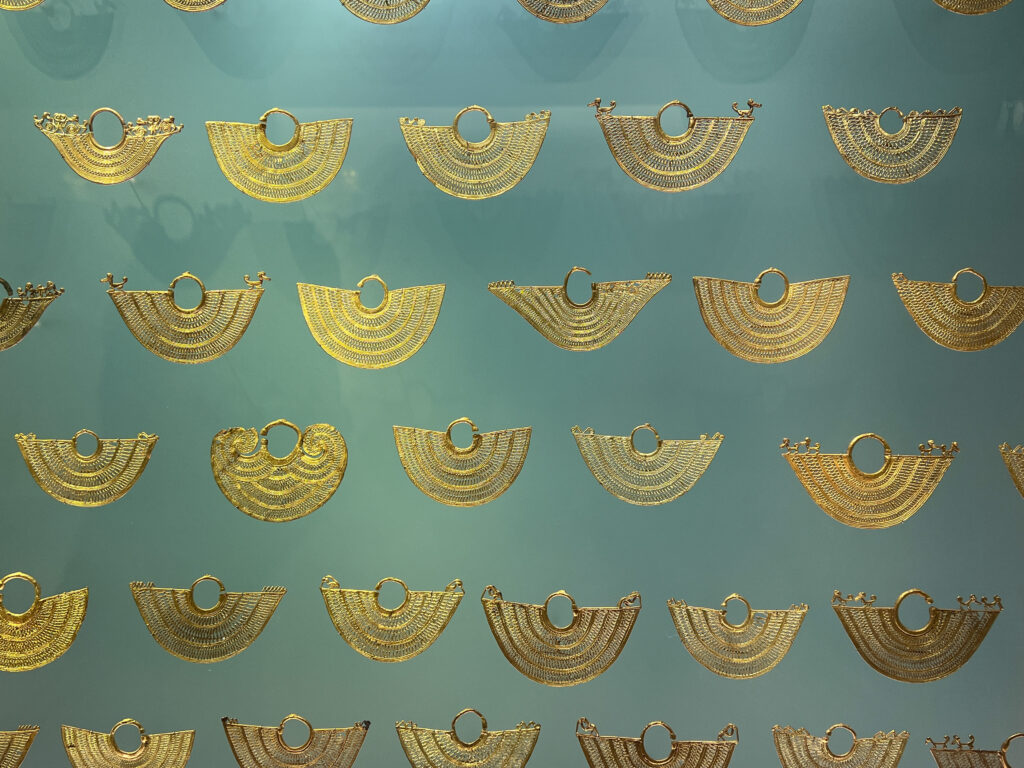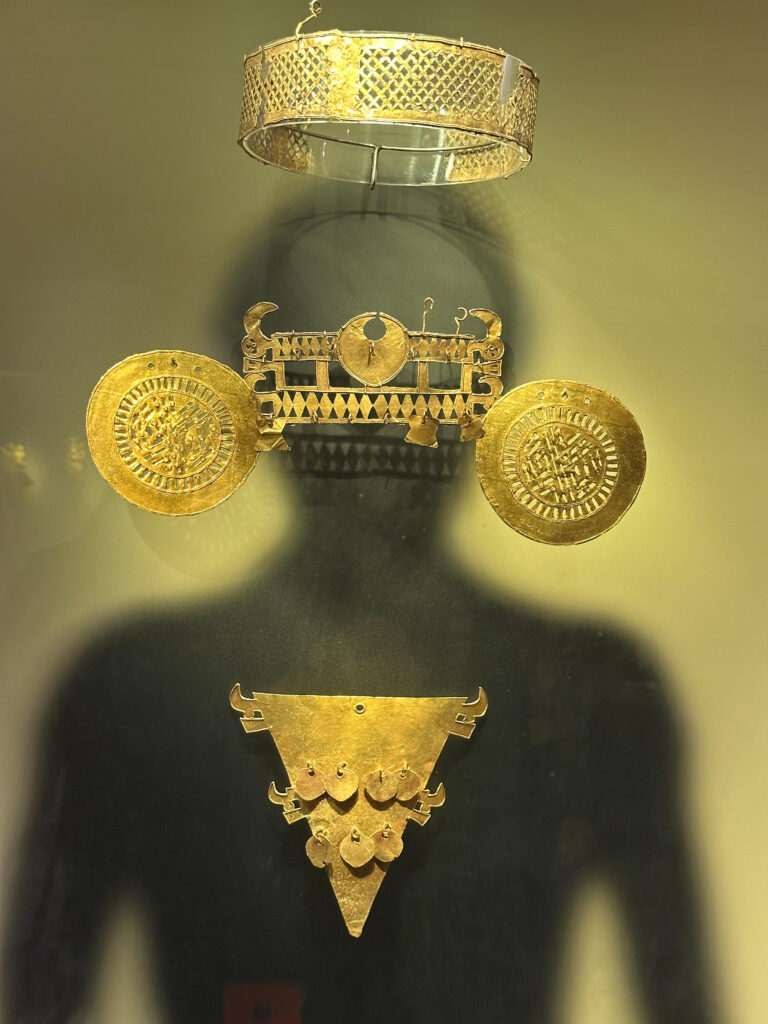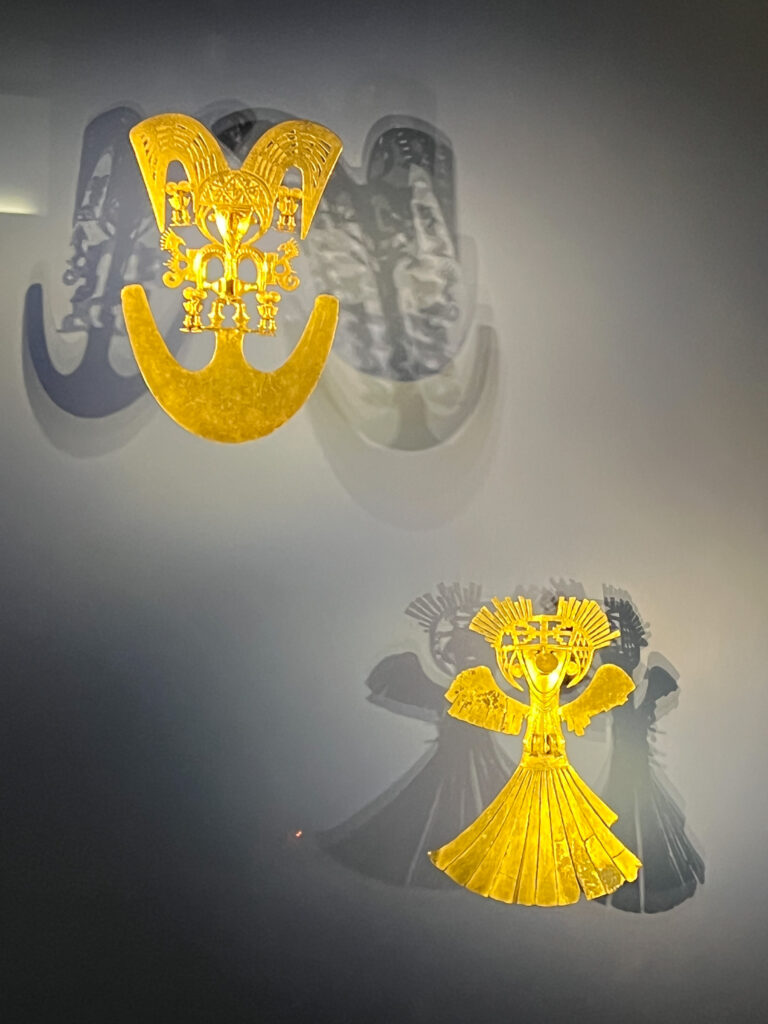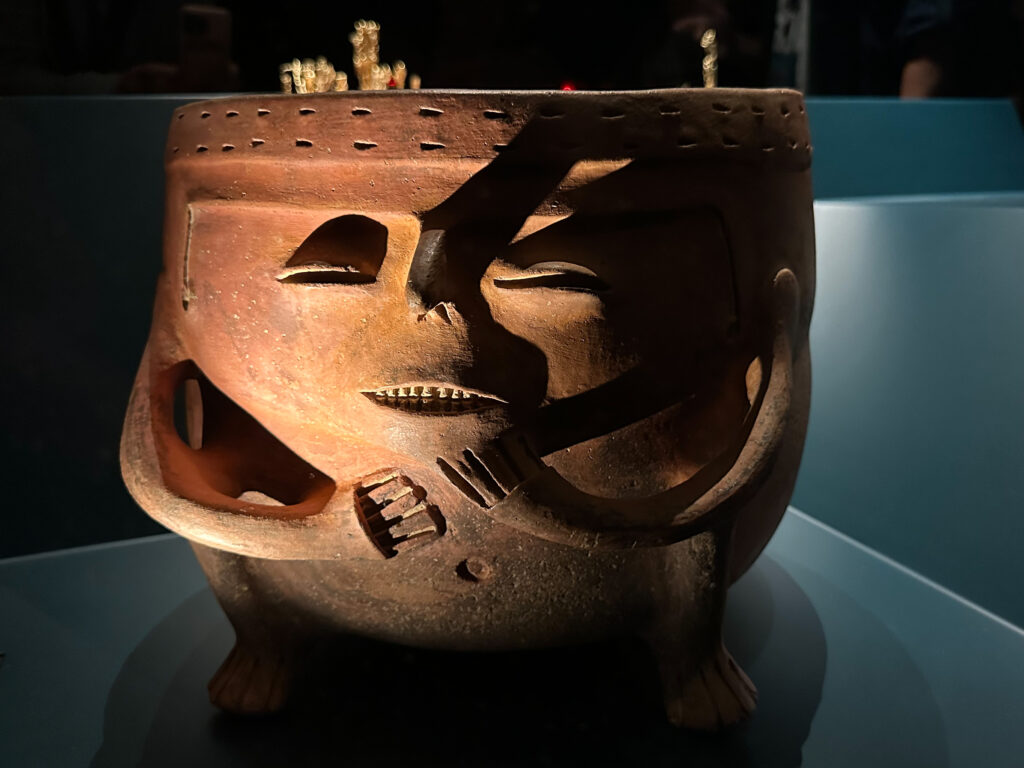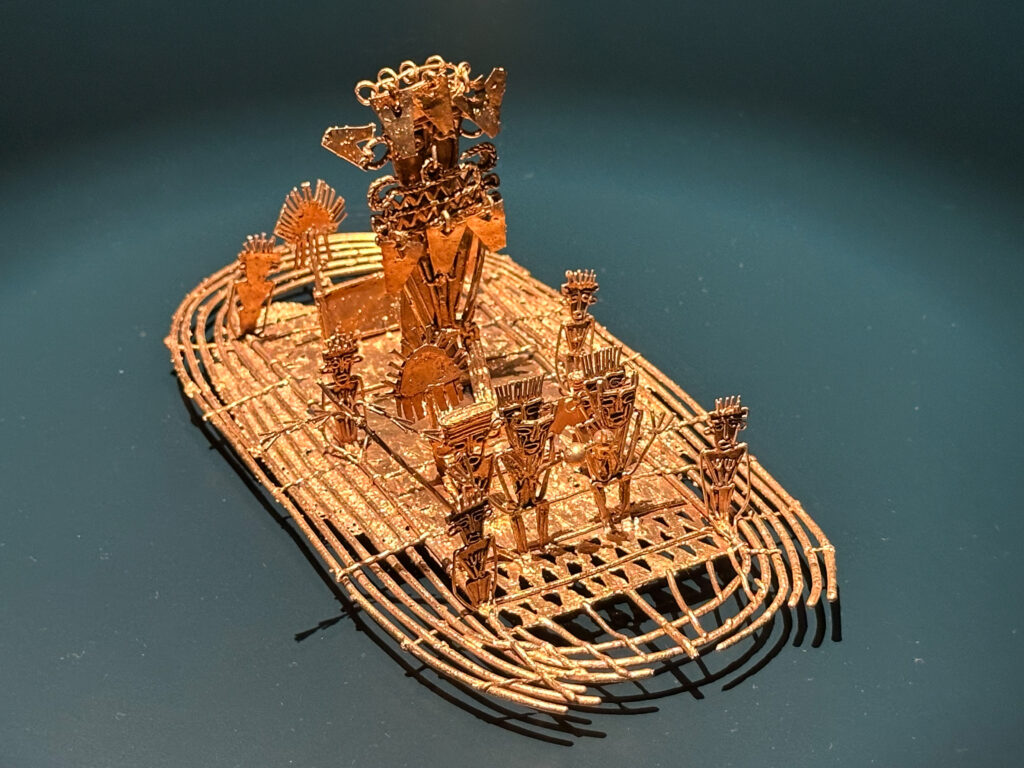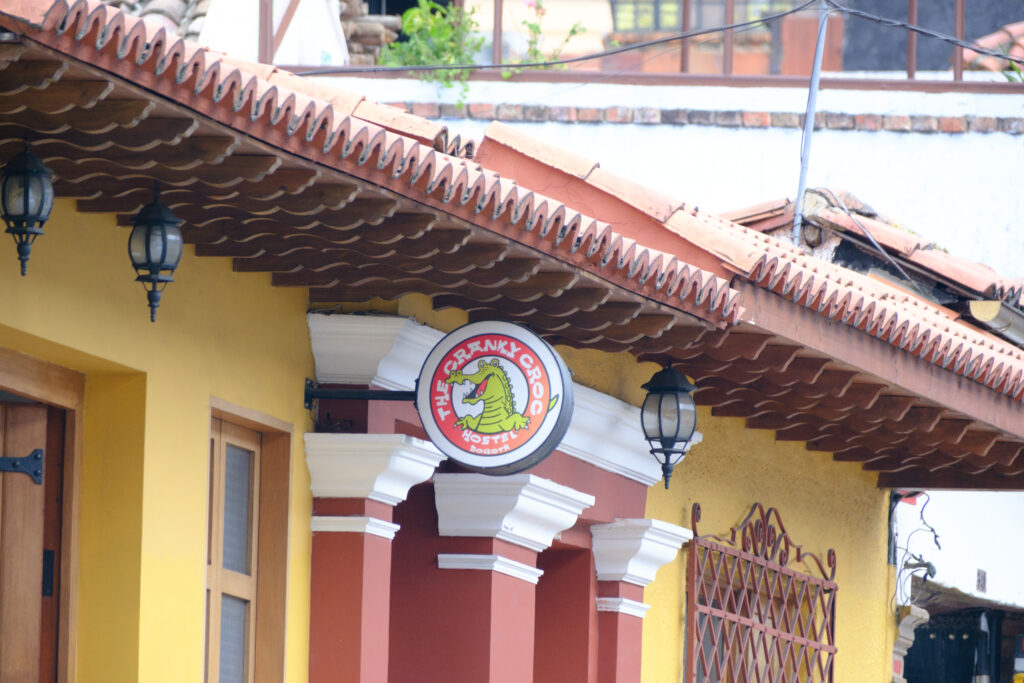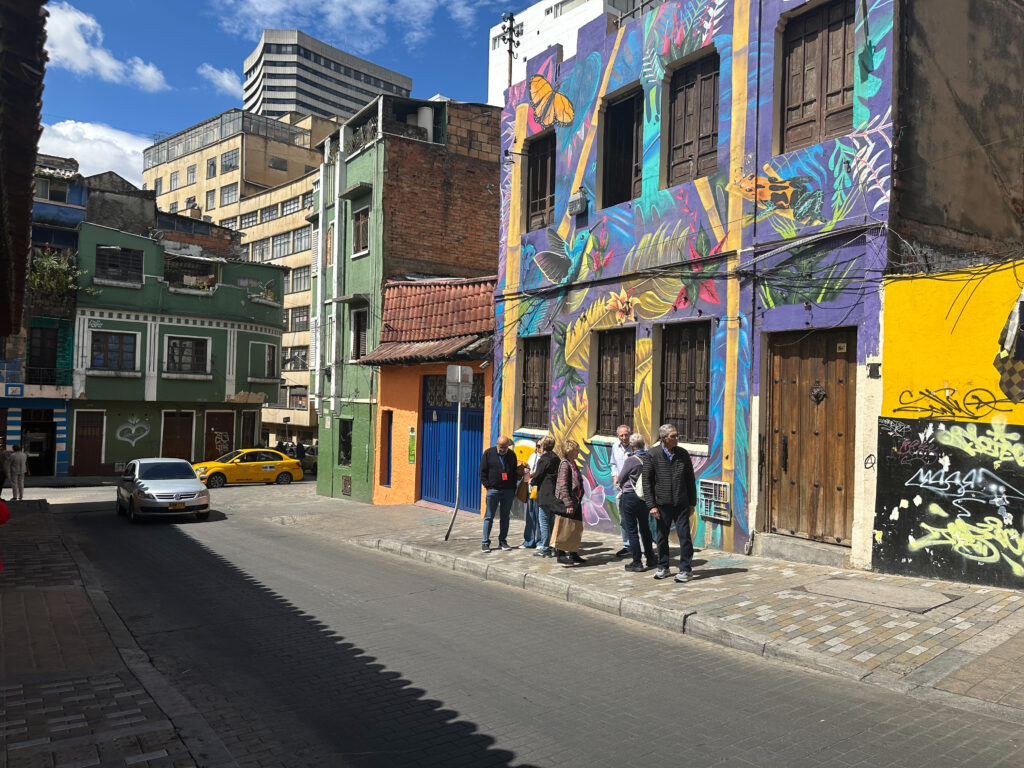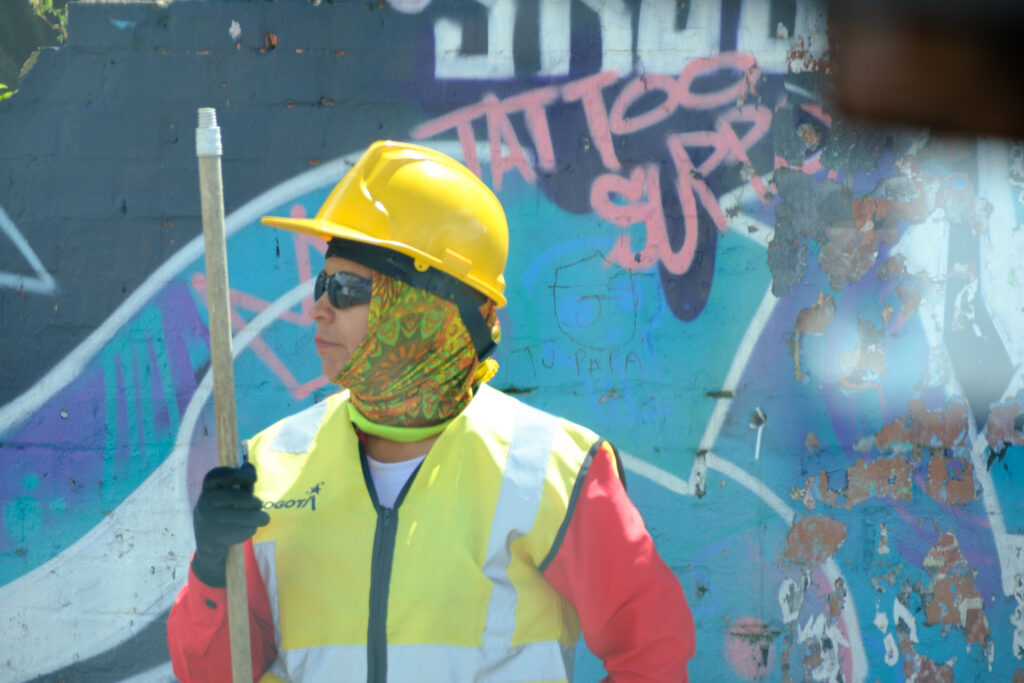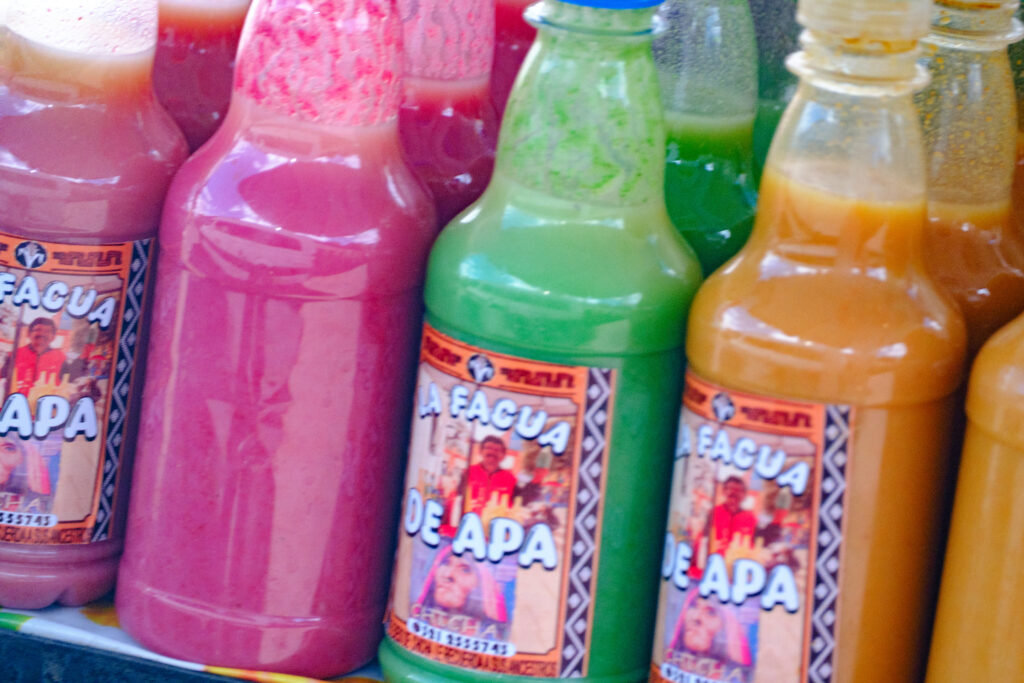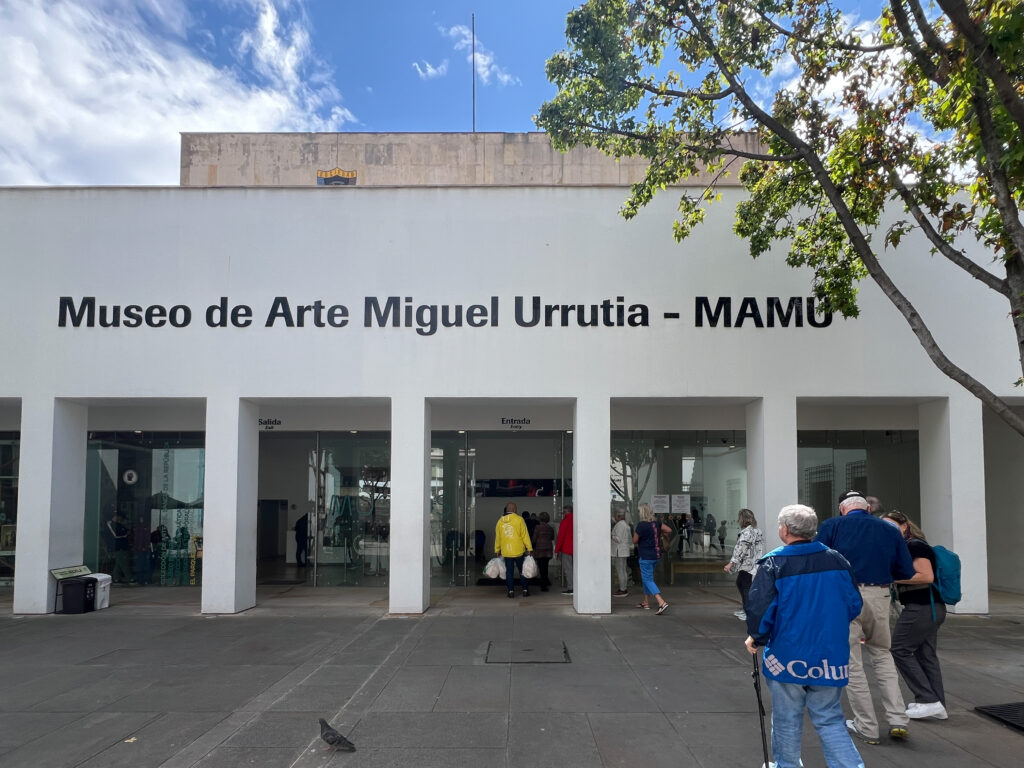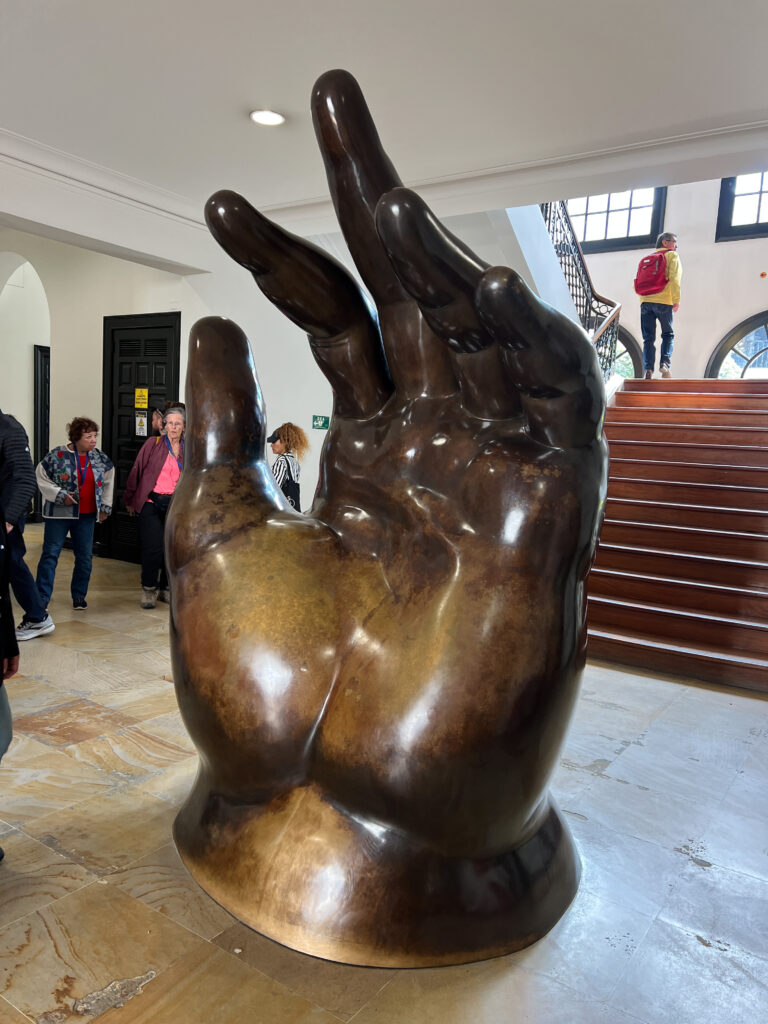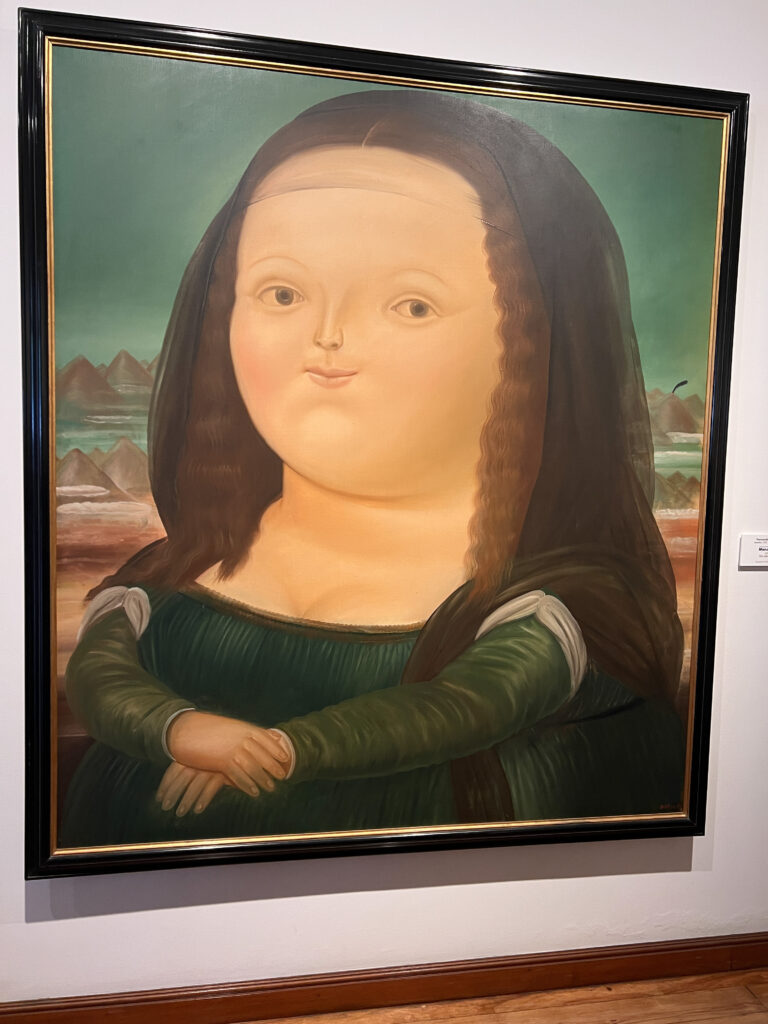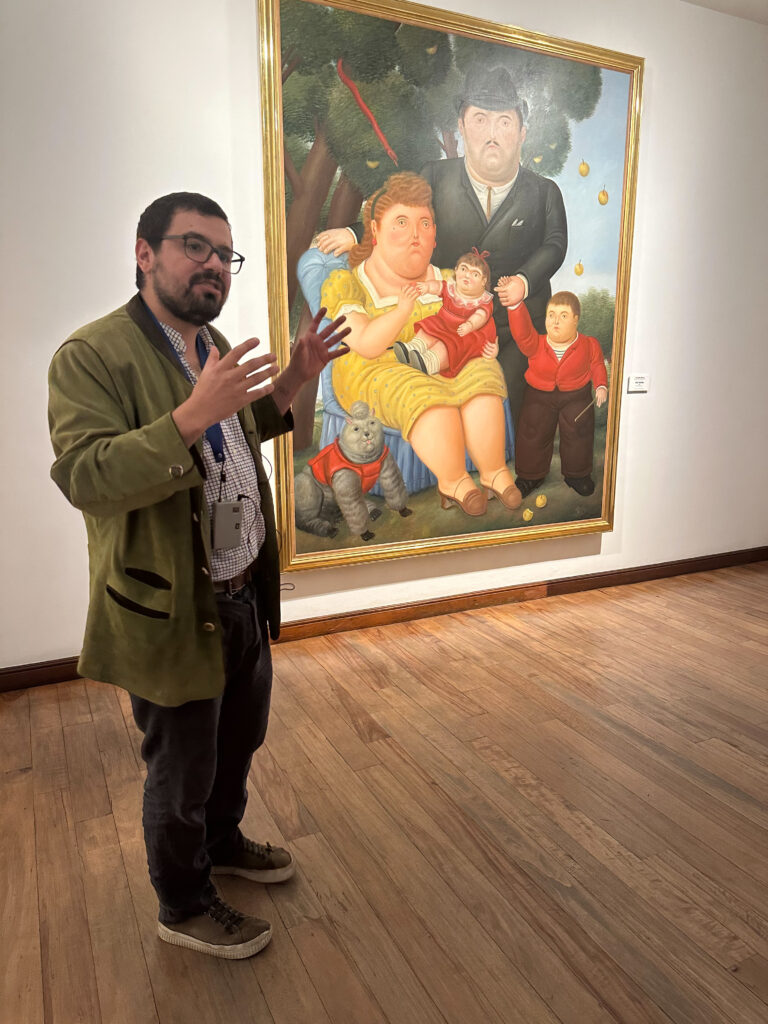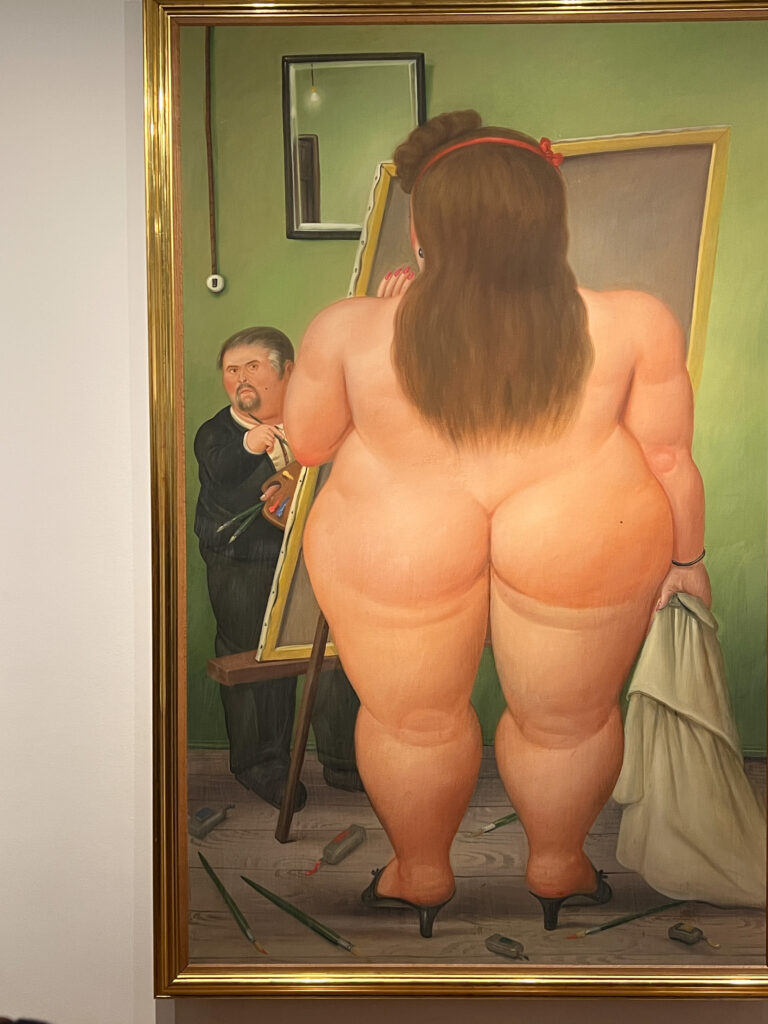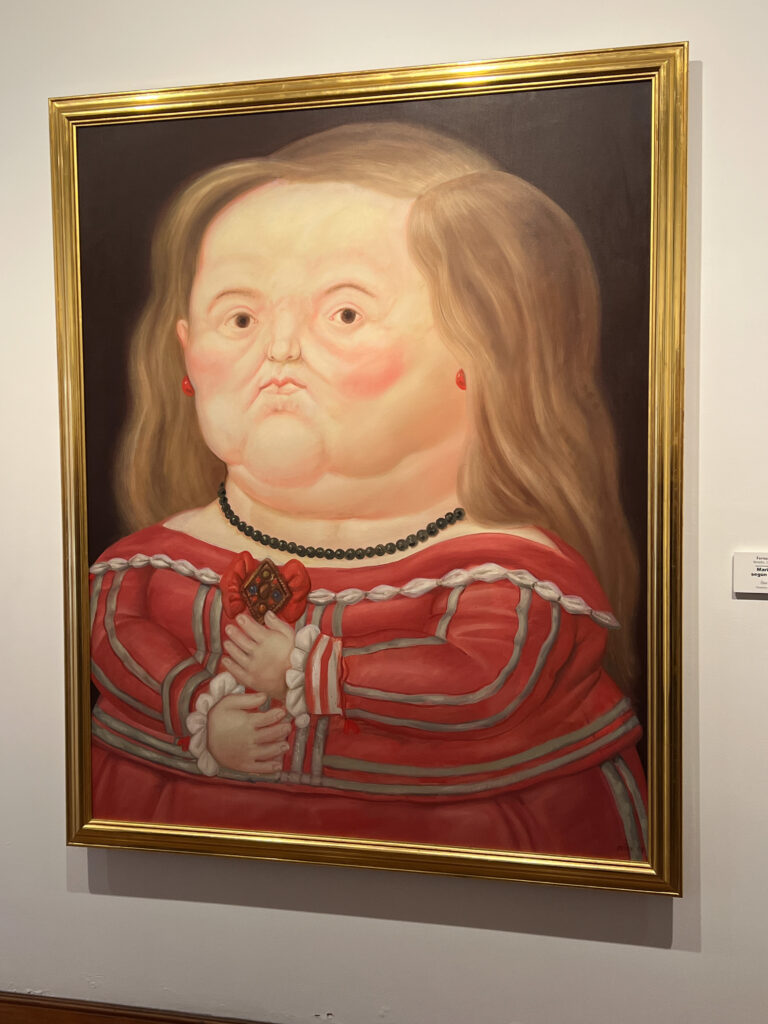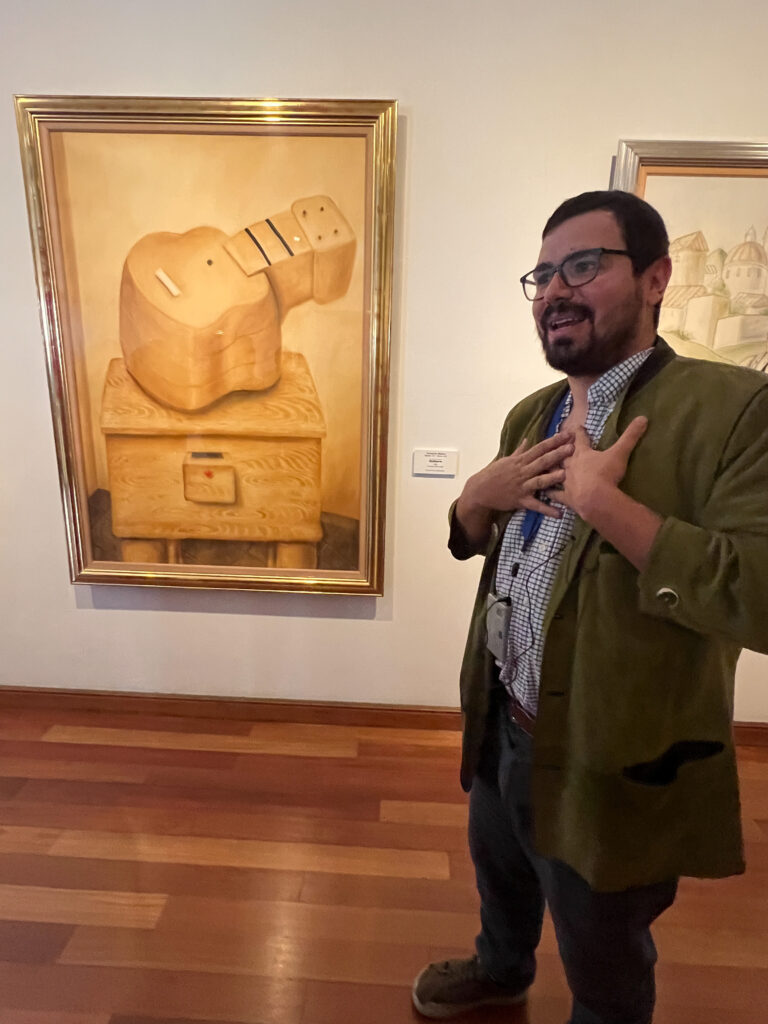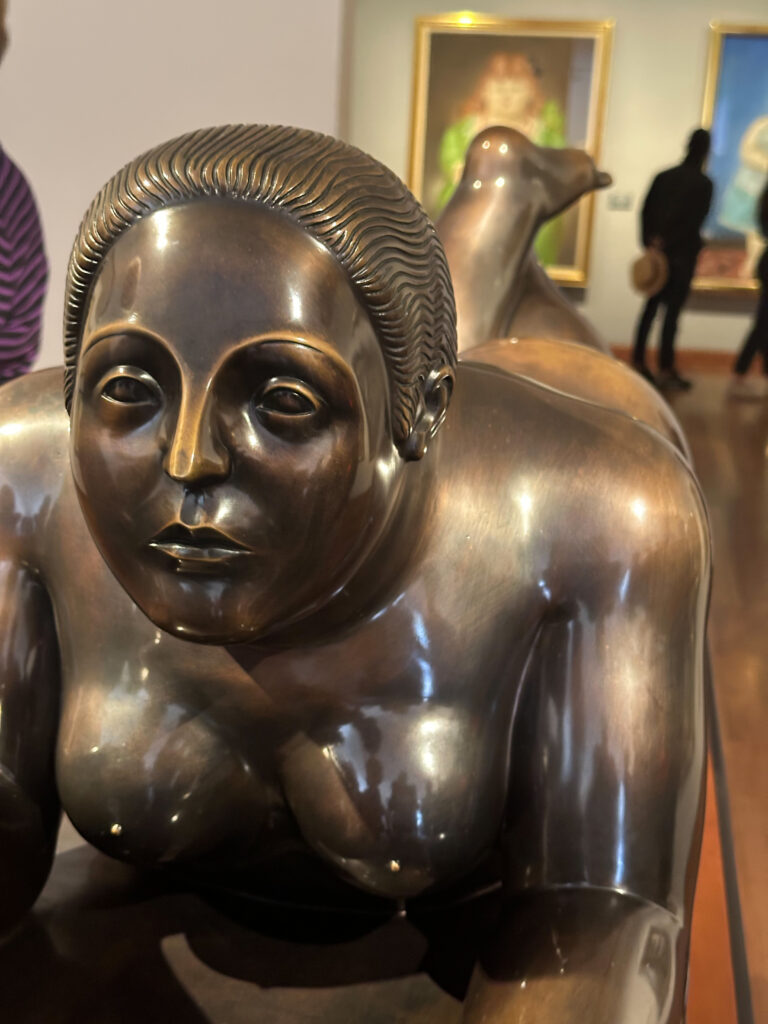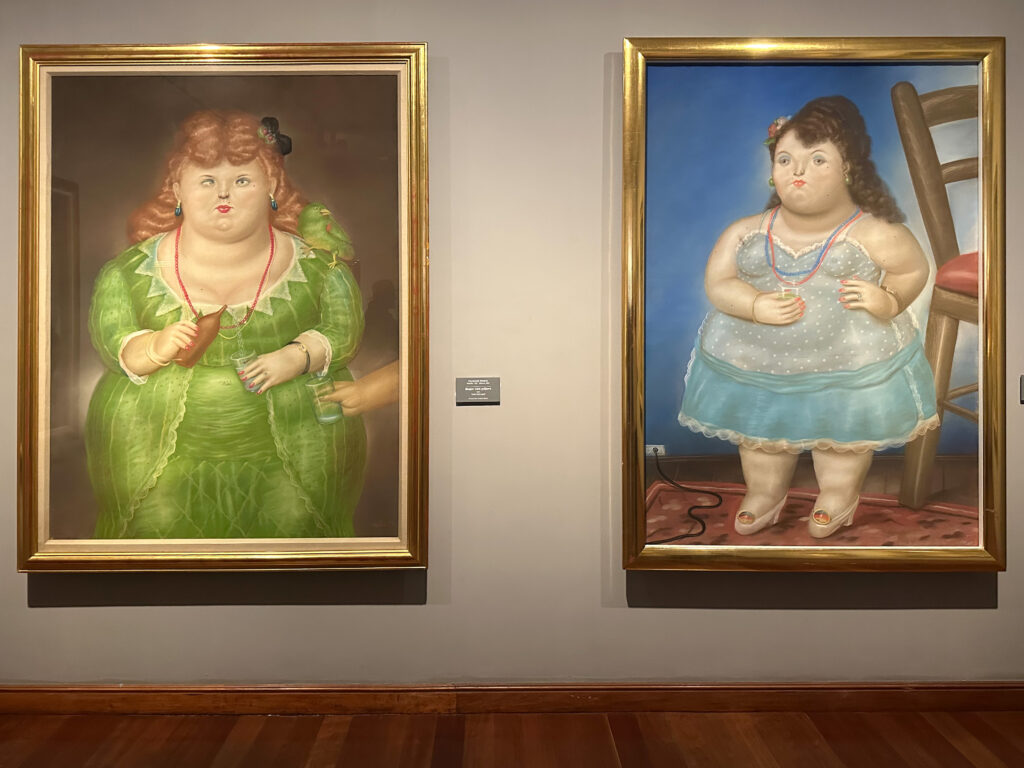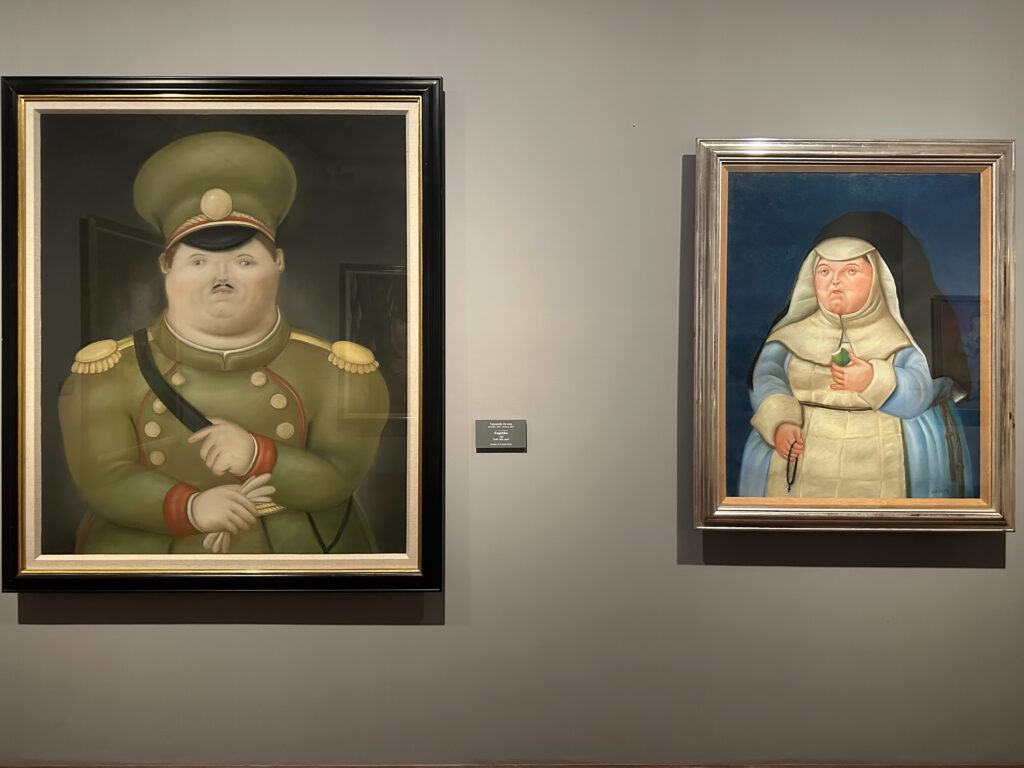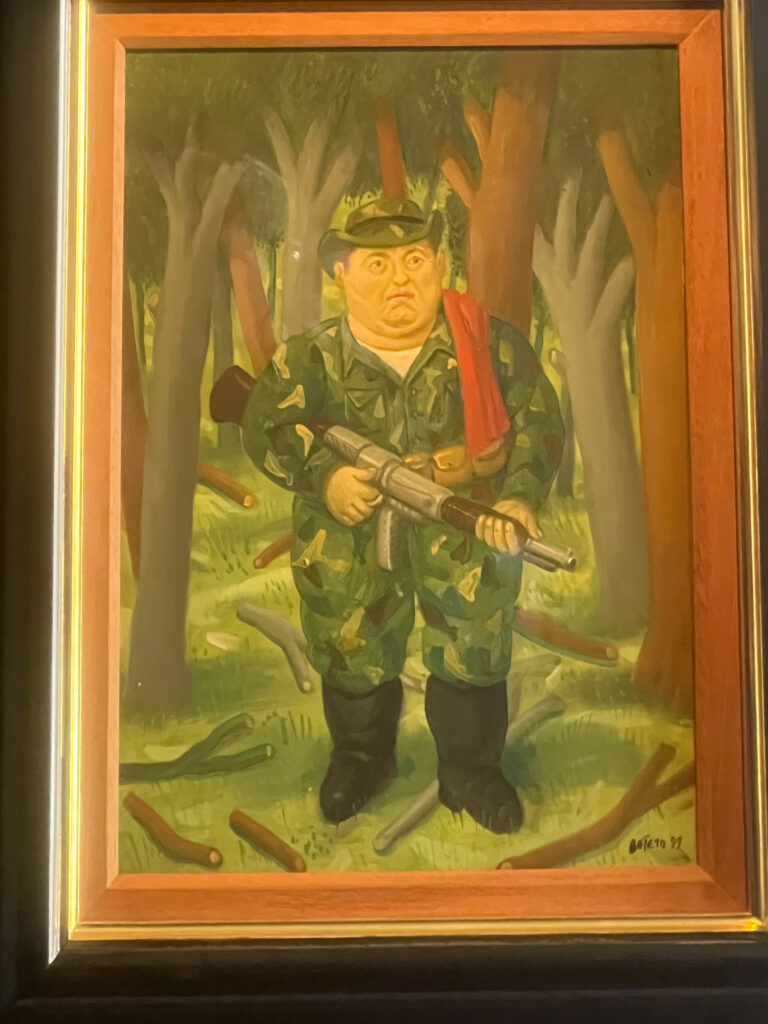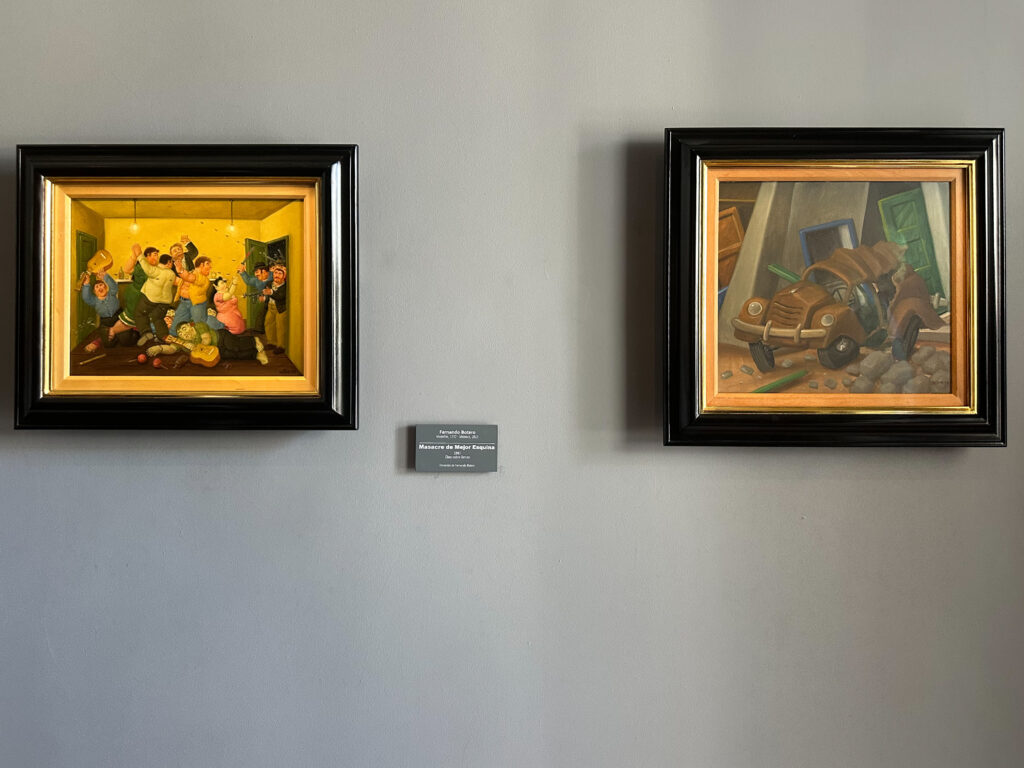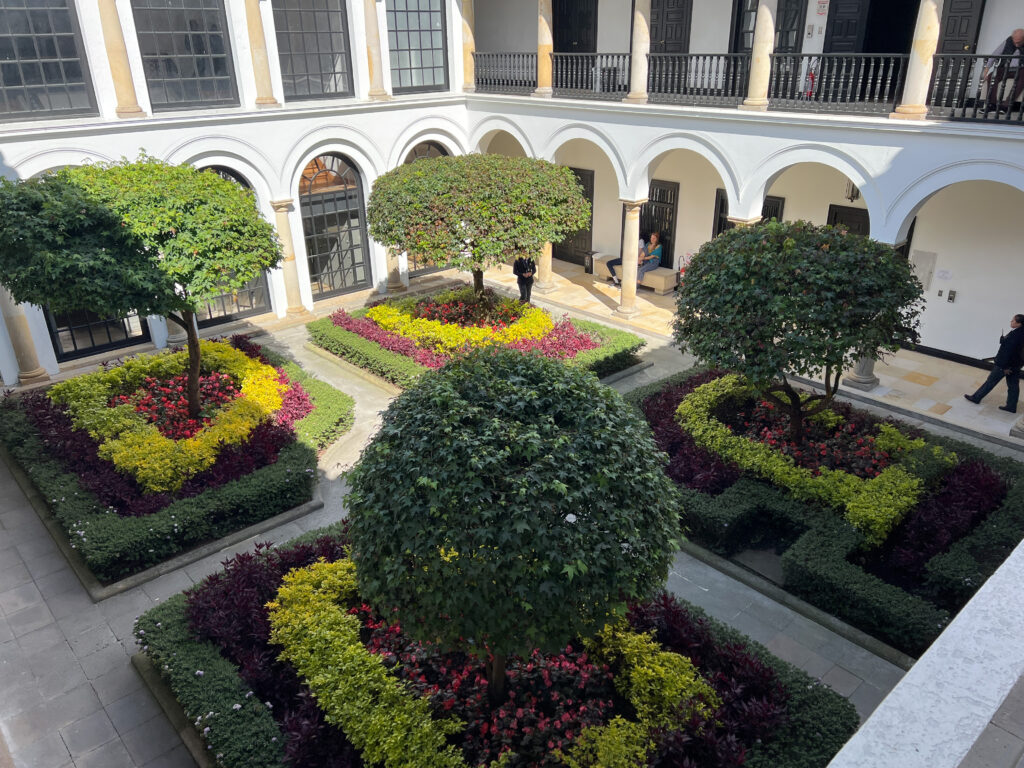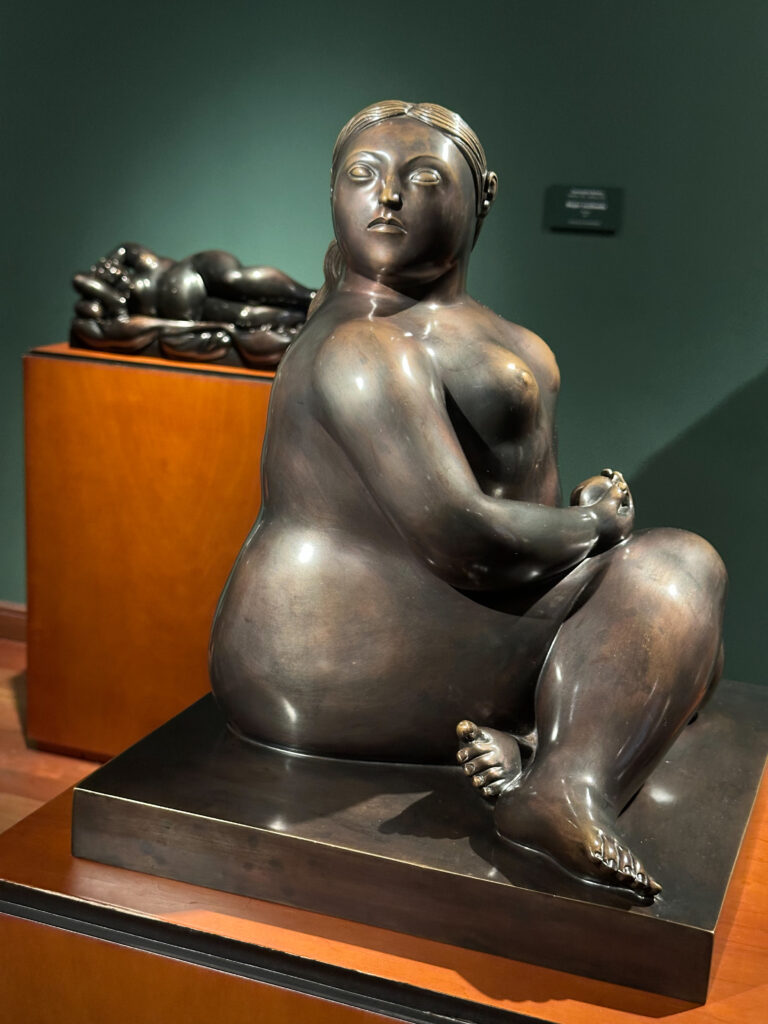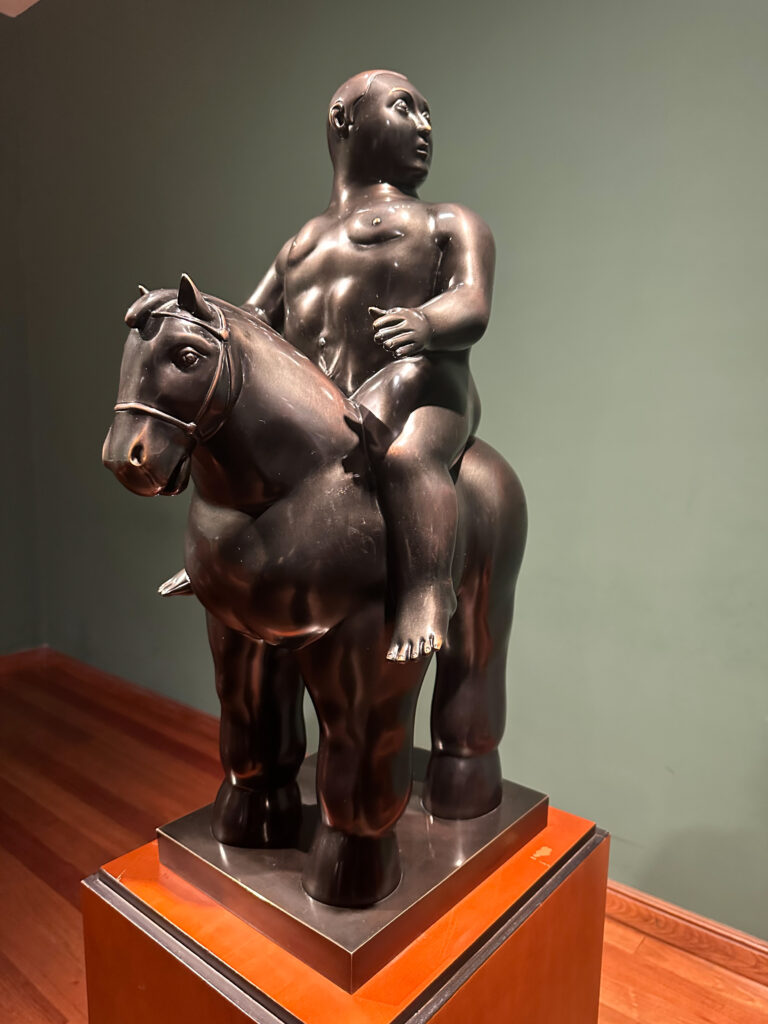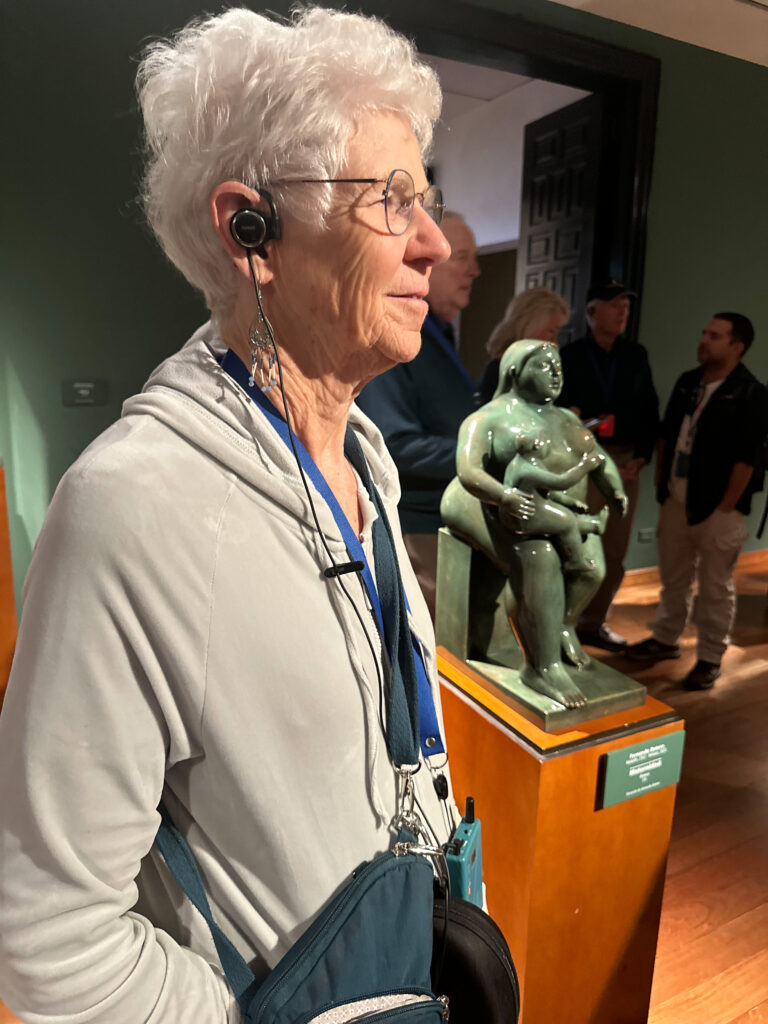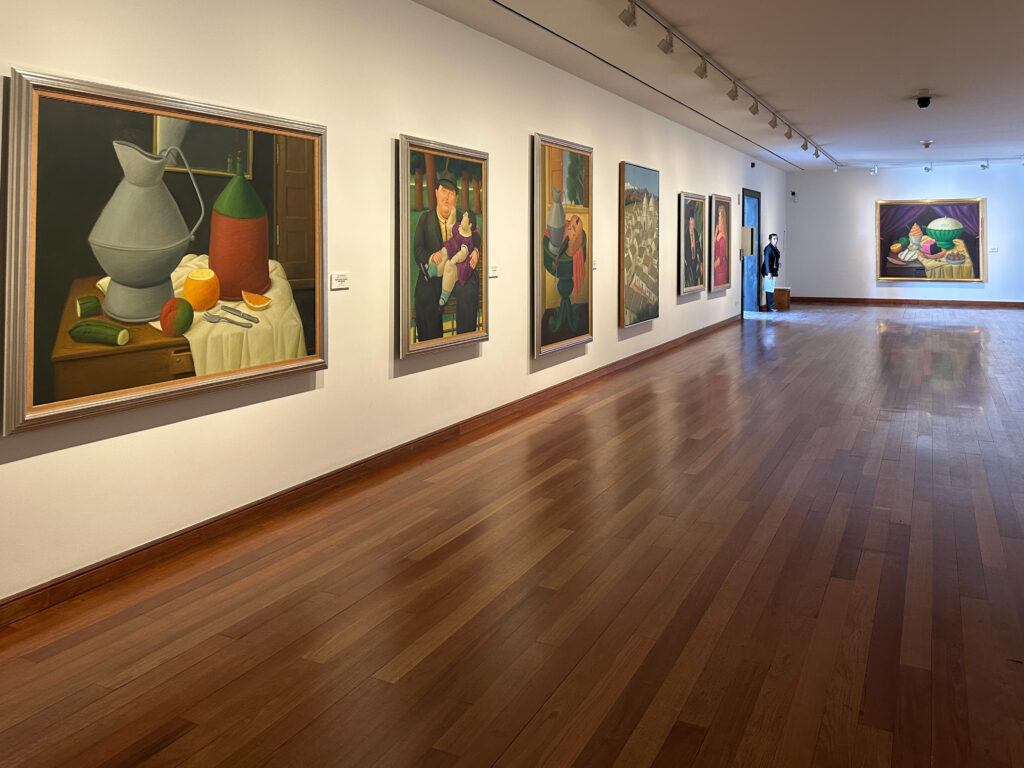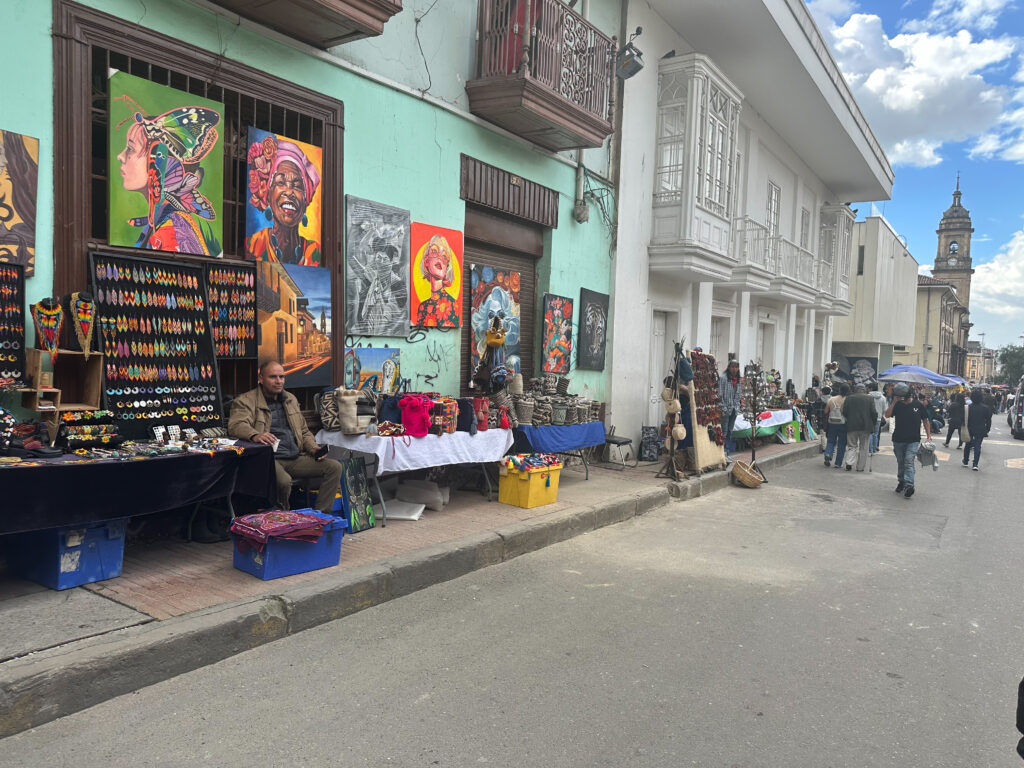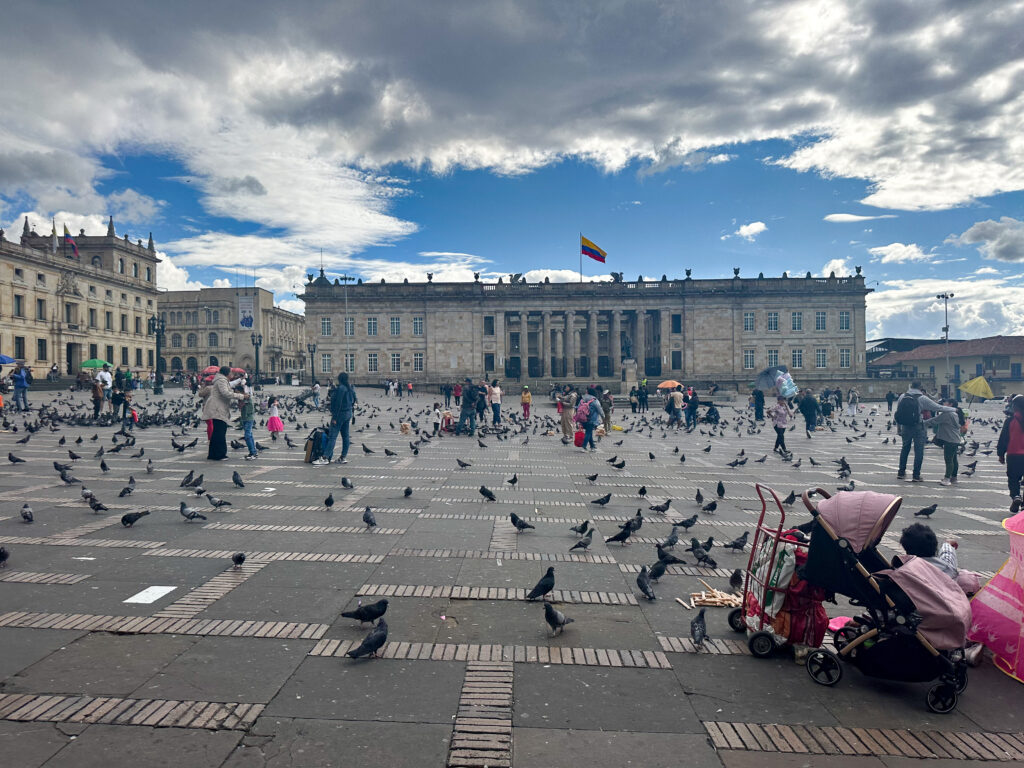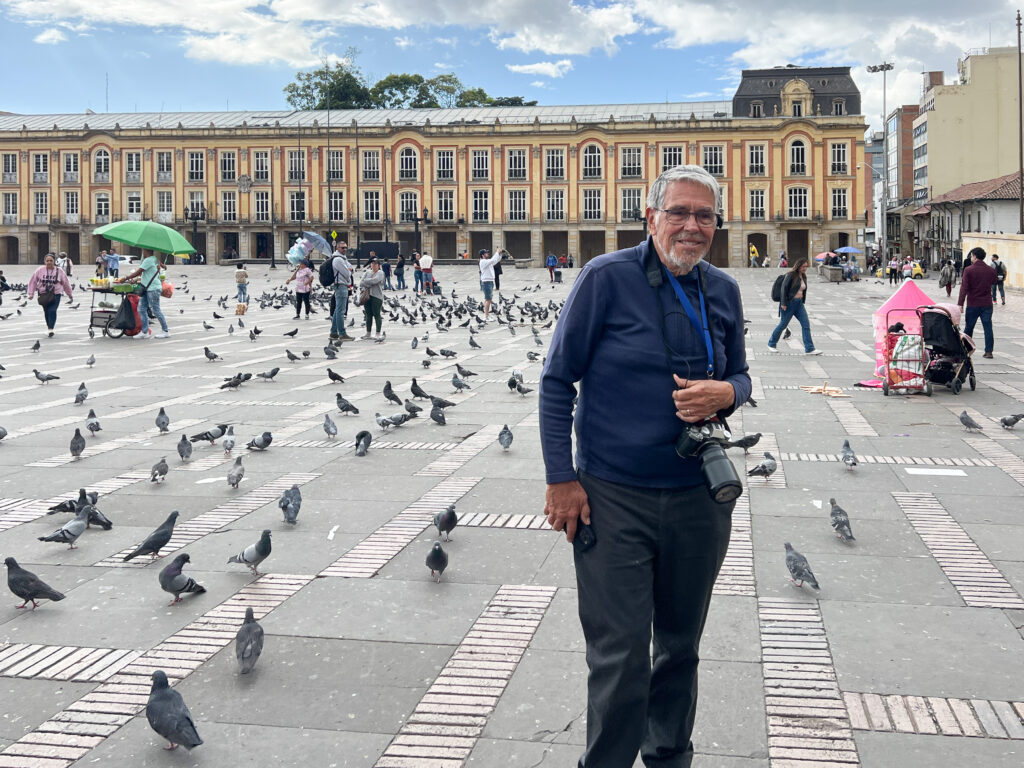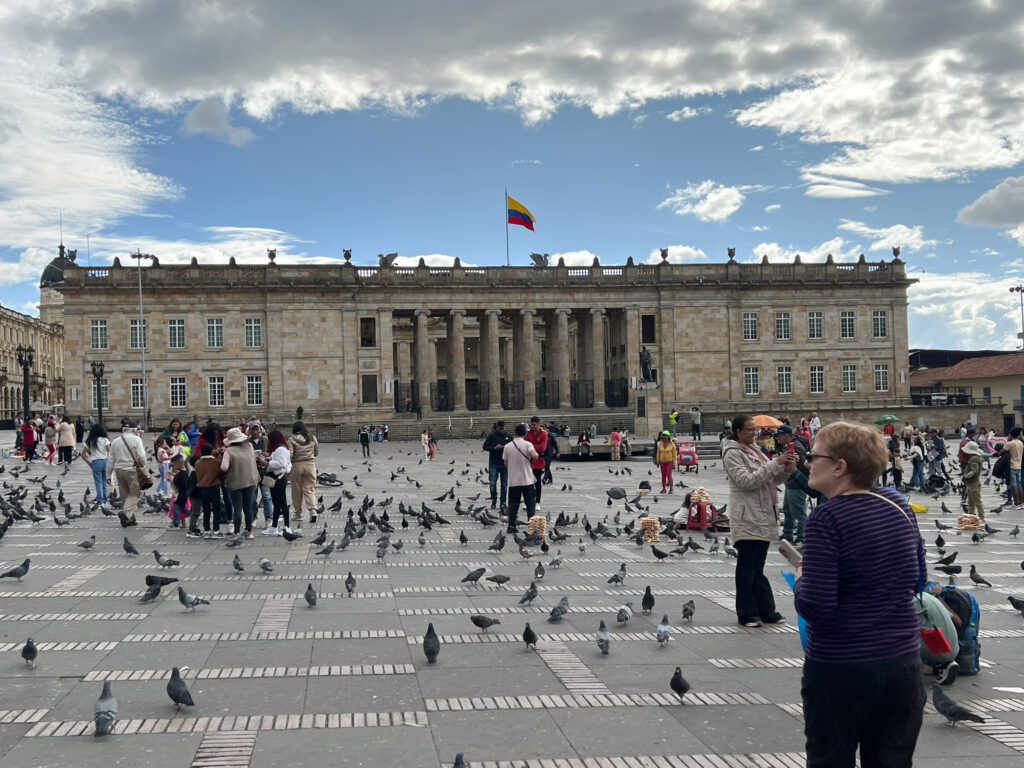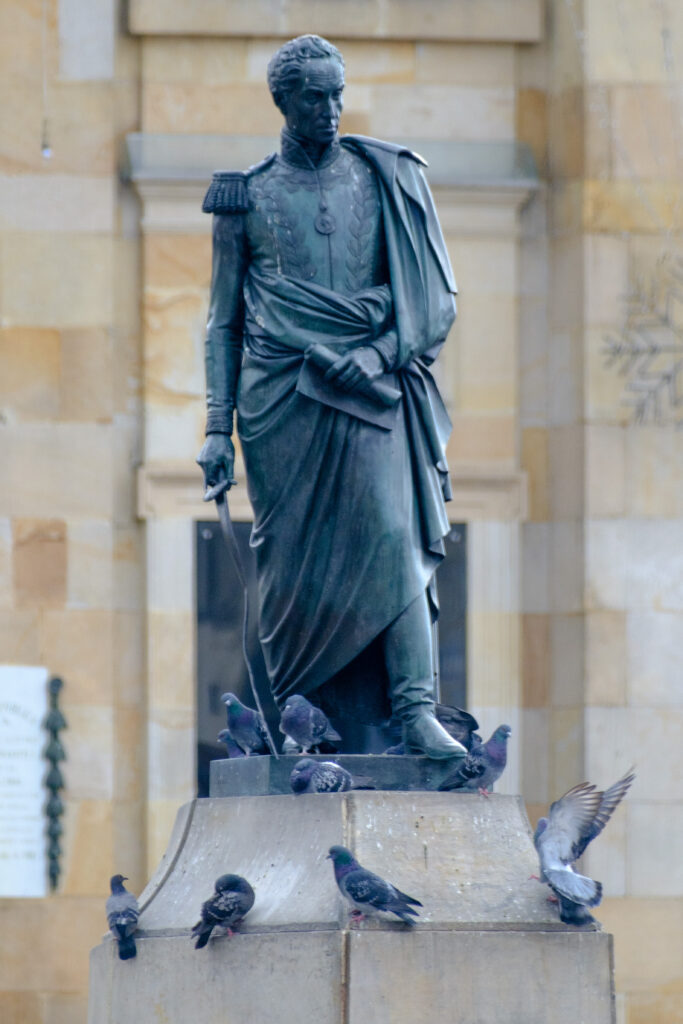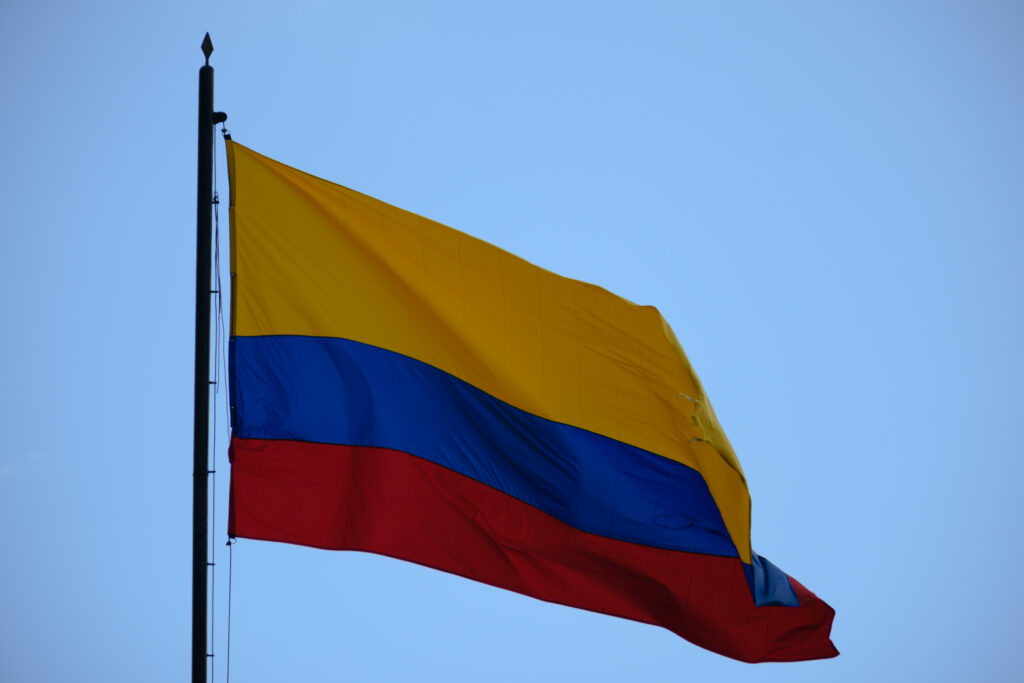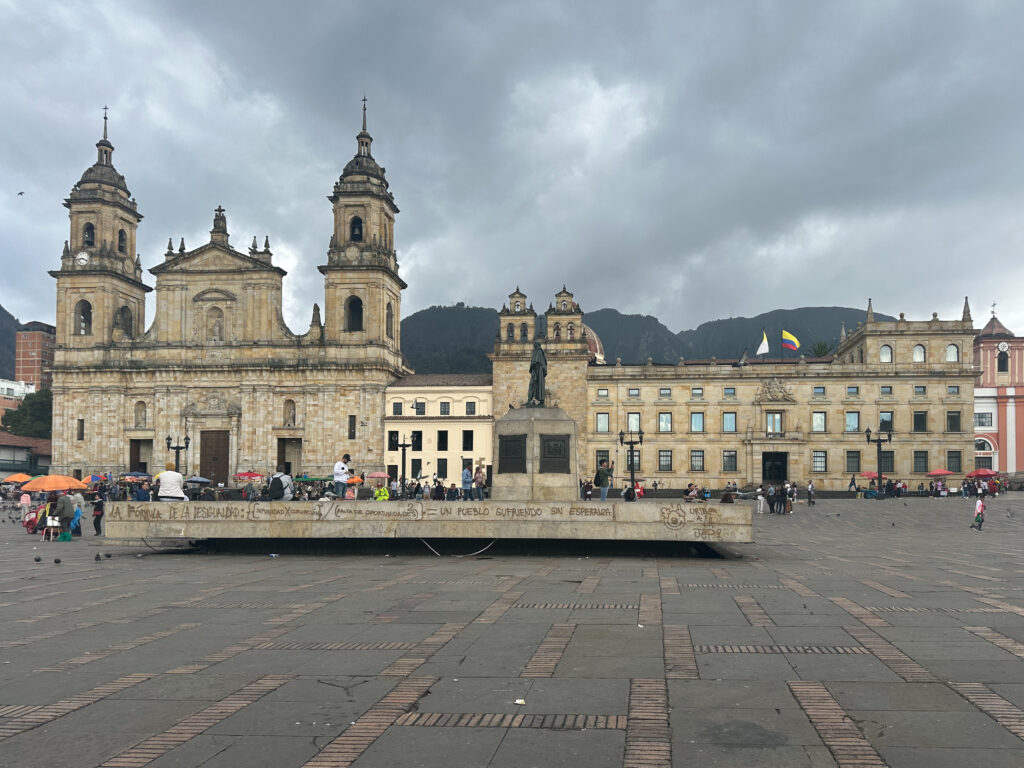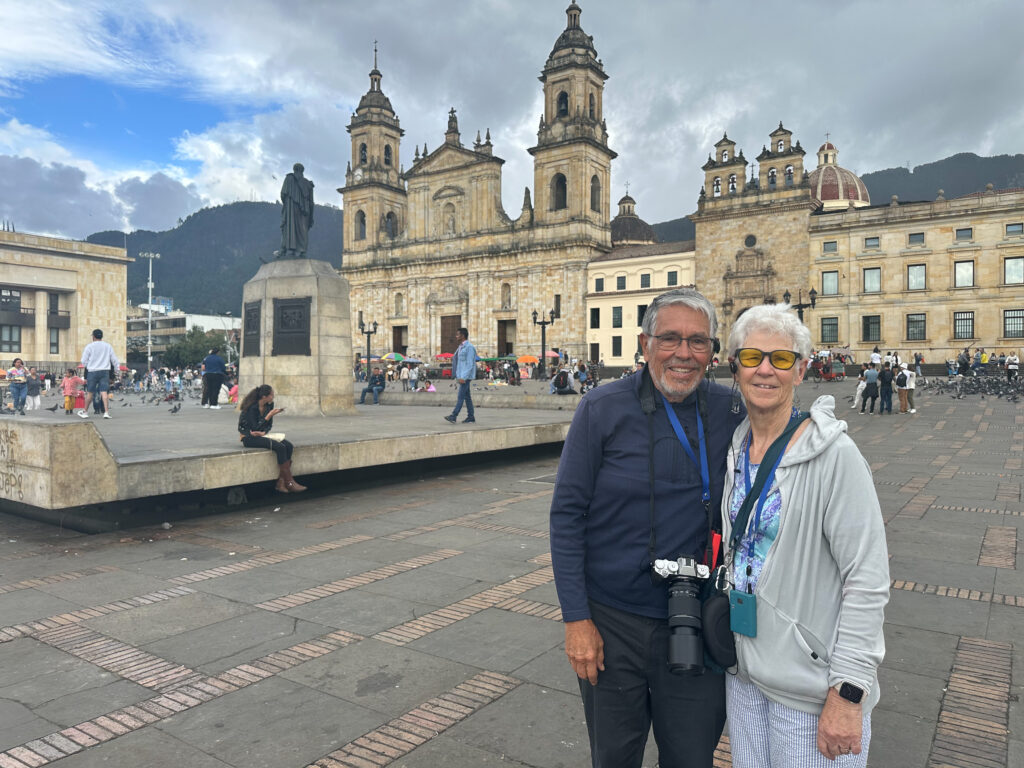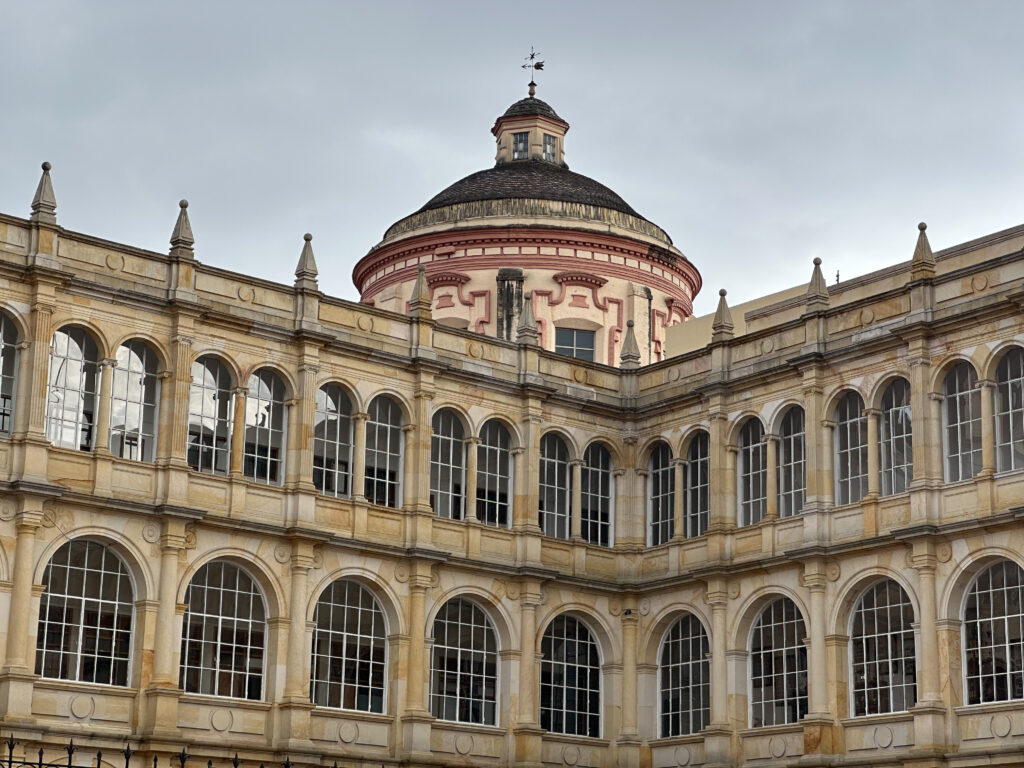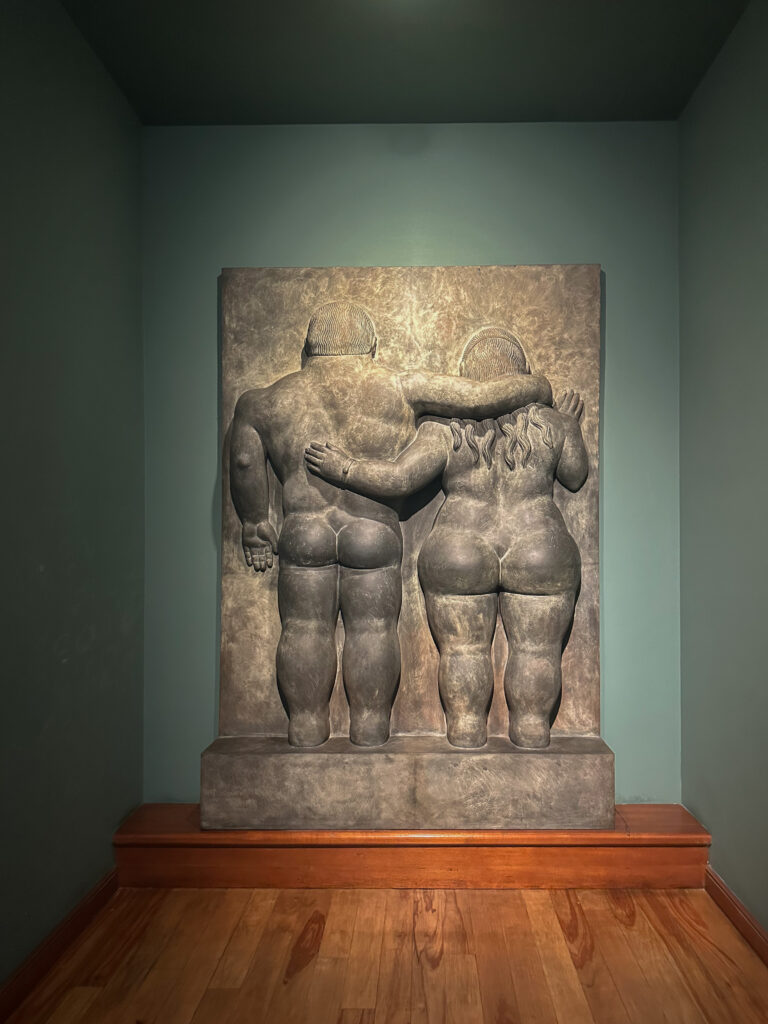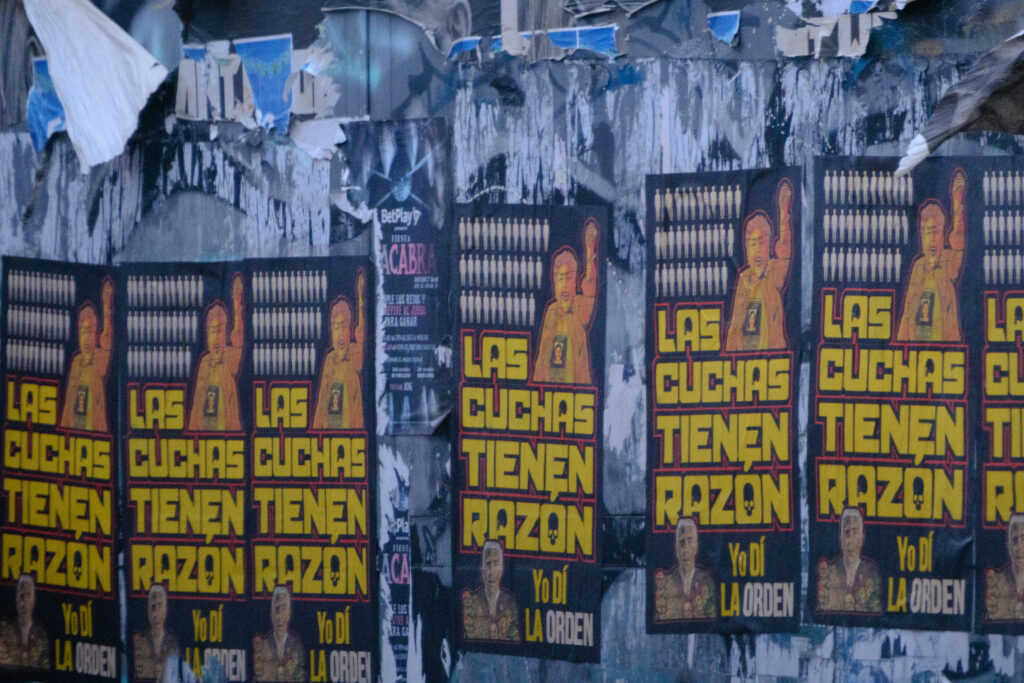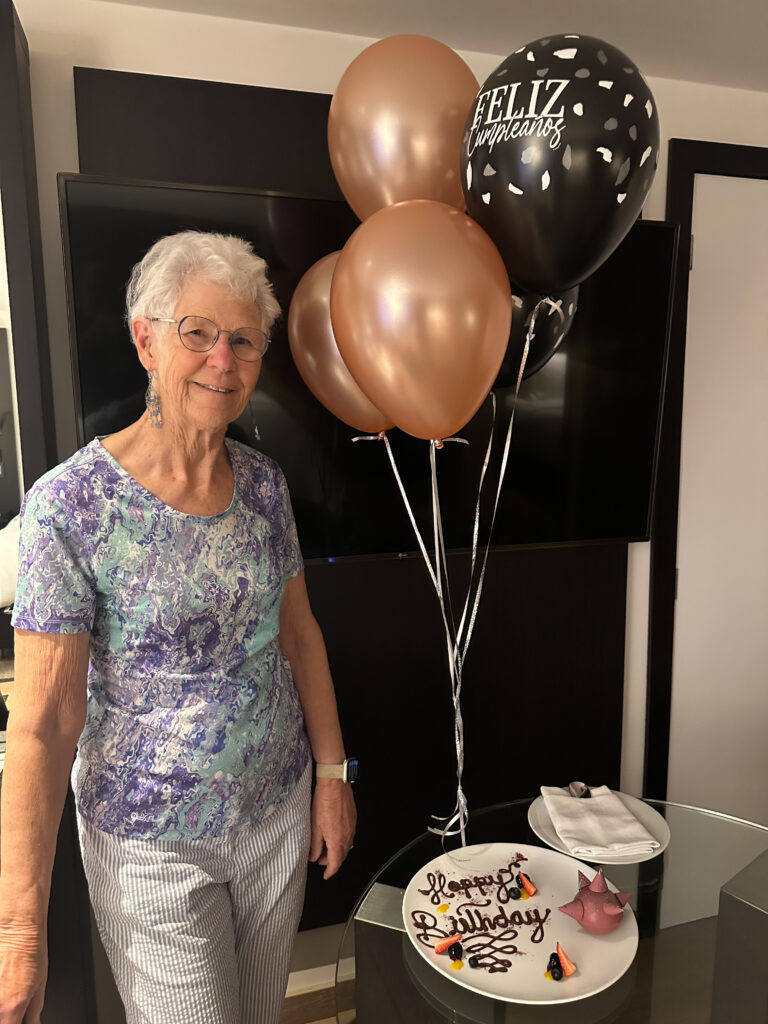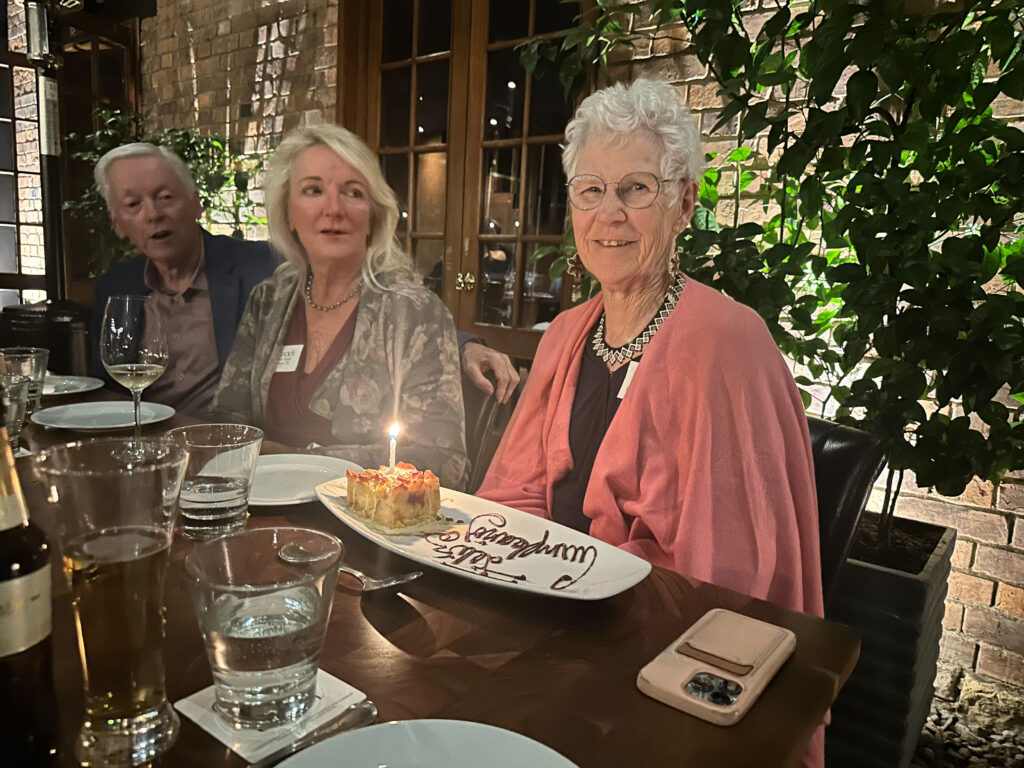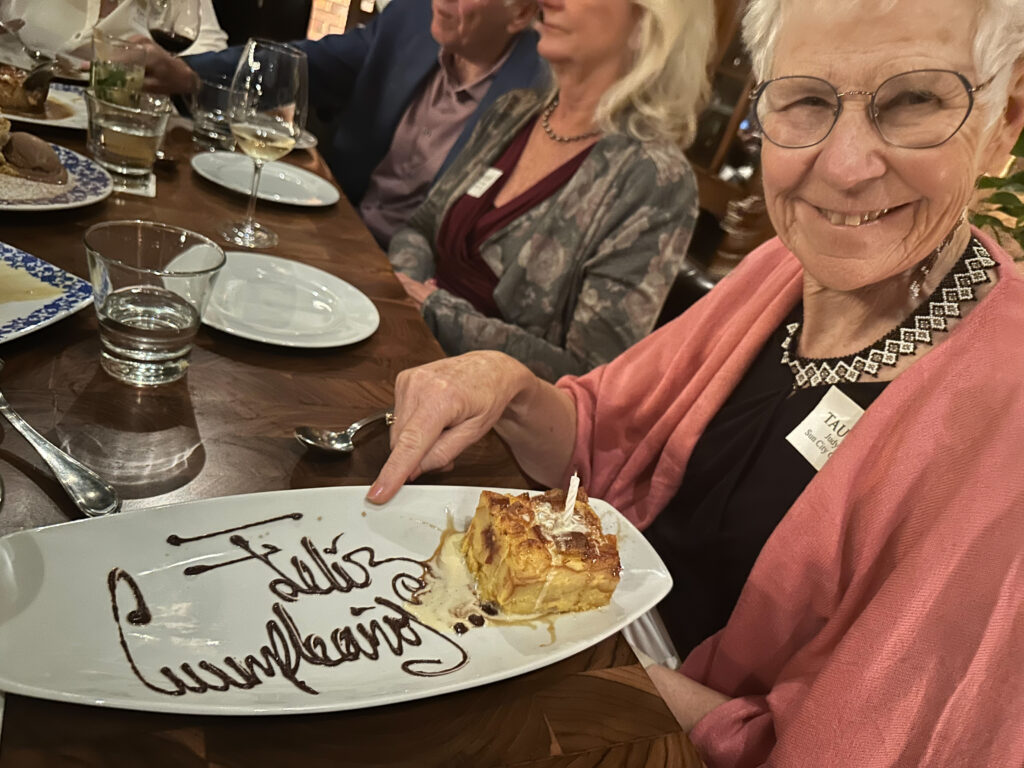Today’s the big day – Judy’s birthday – and we spent it seeing the highlights of the city. Neither of us would have guessed this is where her celebration would occur but then again we never planned on celebrating mine in Israel and India.
First stop: a local neighborhood market, of which there are 19 in Bogotá. The city threatened to shut them all down if they didn’t clean up their act, hygienically and commercially. They did and what we saw appeared to be well run.
Speaking of neighborhoods, the Columbian government back in the 1980s came up with a system of categorizing neighborhoods based on income on a scale of 1 to 6. Category 1 neighborhoods are the poorest; 6 the wealthiest. Middle income neighborhoods might have monthly incomes of $600 per month. Less than 1% of Columbians have monthly incomes of $2,000 or greater. The Four Seasons is in a 6 neighborhood, surprise, surprise.
Another factoid: of roughly 10 million people in the metro area, 900,000 ride a bike every day. Not sure if that includes motorcycles, but there is a good network of bike paths parallel to major thoroughfares.
Fresh fruit and vegetables were the order of the day at the market, with tasting samples of many. As we left we had a sampling of chopped meats, potatoes, pork rinds and plantains. Fun.
Next the Gold Museum, similar in many respects to the Gold Museum in San Jose. The emphasis was as much on indigenous history as gold. The people of the pre-Columbian times developed sophisticated metallurgical techniques that combined gold with other metals such as copper and tin. The museum has a large collection of intricate items created by the indigenous peoples, many of them left behind by the Spaniards when they discovered they had as little as 5% gold content.
The restaurant for lunch turned out to be located within a stone’s throw from our Cranky Crock hostel. Funny after having discovered a place once, going back the next day makes you feel like you’ve come home. Familiarity breeds homeliness, maybe. Typical Colombian food – a mountain of it – that somewhat repeated what we’d had the day before.
Next, a museum focused on the works of Fernando Botero, the most famous Colombian artist, one with a worldwide reputation. All of the works, Botero’s and others from Botero’s private collection, were donated by Botero to the Colombian government. The stipulation was that the museum would be open to all without charge. The museum, like many public museums in Colombia, are under the management of the National Bank of Colombia.
Our tour guide for the museum was Botero’s grandson who knew the artist well and told many interesting stories of his relationship with his grandfather. Botero’s main artistic focus was on volume – the relationship of a painting’s elements to each other in terms of size. The photos give an idea of what that means. He was also a sculptor and is sometimes better known for that work than his paintings.
Some of Botero’s art dealt with the conflict with FARC, various paramilitary groups and drug cartels (lines between which were often blurred) which led to violence and bloodshed for decades.
Finally, a walk through the Candelaria neighborhood where Judy and I toured yesterday on our foodie walk. Today, however, we went to an area we hadn’t seen, the Place de Bolivar. The Palace of Justice, the National Capitol and the Primary Cathedral of Bogotá are located there, along with about a million pigeons, as any good town square should have.
At the welcome dinner this evening Judy’s birthday was recognized with a candle bedecked dessert and a round of Happy Birthday singing.
An hour’s bus ride back to the hotel and we’re prepping for dinner at 6:45 PM. Bags out at 7 AM, a day at the Salt Mine (literally) and then a 5 PM flight to Medellin. Box lunch will be served on the bus to the airport. We ain’t on Le Bellot anymore!
